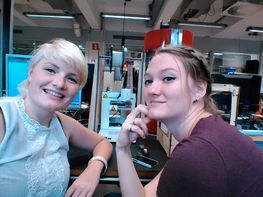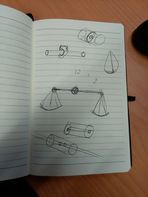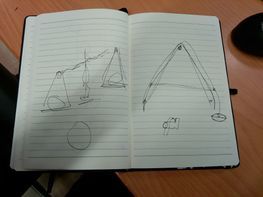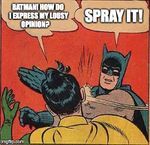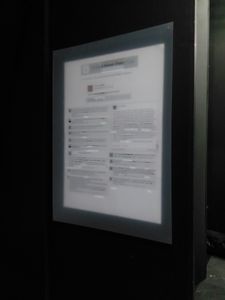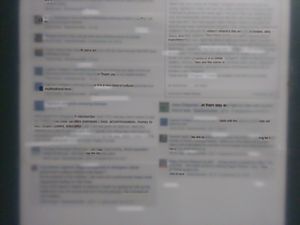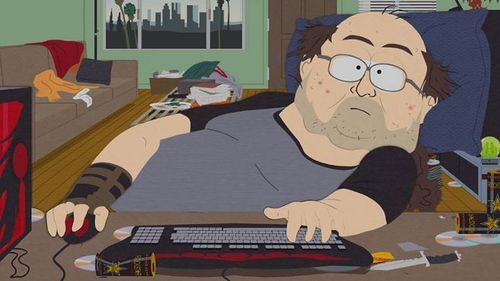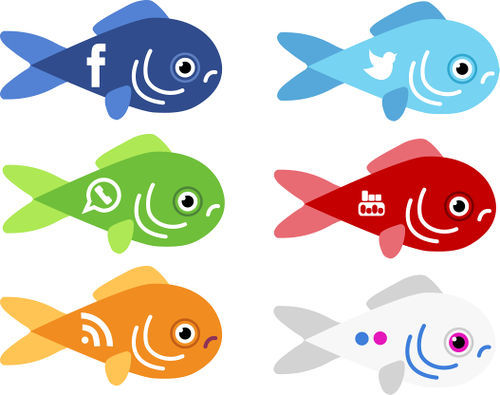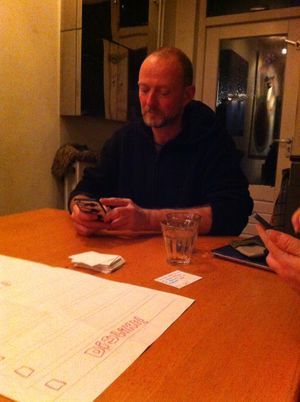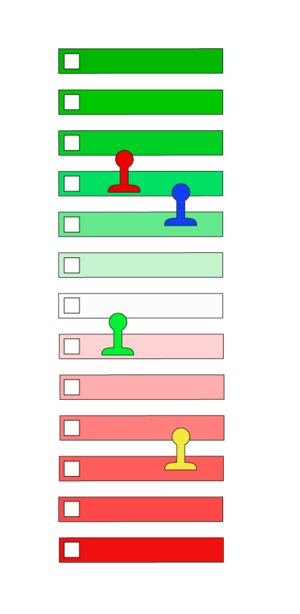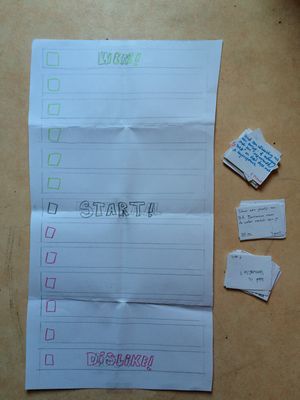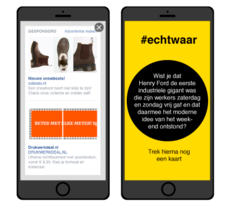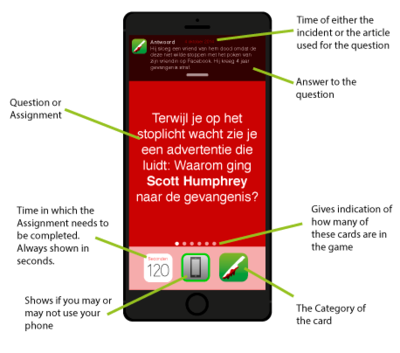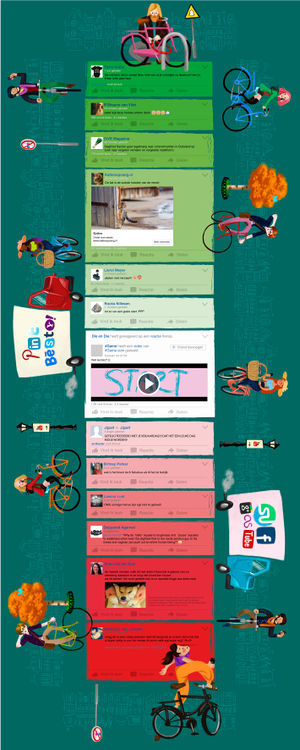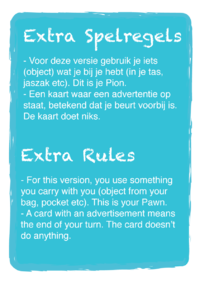Difference between revisions of "User:FloorSteinz"
FloorSteinz (talk | contribs) |
FloorSteinz (talk | contribs) |
||
| (58 intermediate revisions by the same user not shown) | |||
| Line 1: | Line 1: | ||
| + | [[File:WinterFloor.jpg|thumb|left|200x200px|'''Floor Steinz''']] | ||
| + | |||
__TOC__ | __TOC__ | ||
| + | |||
| + | |||
=BlackLivesMatter= | =BlackLivesMatter= | ||
| + | [[File:Blacklivesmatter.jpg | right | 300 px]] | ||
==Background Information== | ==Background Information== | ||
| + | |||
It’s an activist movement from the US that began in July 2013 after George Zimmerman killed the African-American teen Trayvon Martin. | It’s an activist movement from the US that began in July 2013 after George Zimmerman killed the African-American teen Trayvon Martin. | ||
The activist campaigns against the police brutality against African American in the United States. | The activist campaigns against the police brutality against African American in the United States. | ||
The movement grew enormously after the deaths of Michael Brown, a African Americans in Ferguson and Eric Garner from New York City, both unarmed. In both cases the police officers were not charged with murder. With the Ferguson incident, the movement reached national awareness. | The movement grew enormously after the deaths of Michael Brown, a African Americans in Ferguson and Eric Garner from New York City, both unarmed. In both cases the police officers were not charged with murder. With the Ferguson incident, the movement reached national awareness. | ||
| − | The movement has met with Barack Obama and other leaders to demand an end to racial profiling, police brutality, mass incarceration of African-Americans and the militarization of many US police departments. | + | The movement has met with Barack Obama and other leaders to demand an end to racial profiling, police brutality, mass incarceration of African-Americans and the militarization of many US police departments. |
| − | |||
| − | |||
| − | |||
==Round 1 - The Scale== | ==Round 1 - The Scale== | ||
| Line 23: | Line 26: | ||
File:blackandwhite.jpg| | File:blackandwhite.jpg| | ||
</gallery> | </gallery> | ||
| + | |||
| + | ==Round 2 - The Meme== | ||
| + | |||
| + | We had an endless discussion with the group 'Abuse of Power' (which was the overall theme). | ||
| + | In the end we decided to make different memes with the frase ''Spray it!''. | ||
| + | ''Spray it!'' is a frase you can use when you see abuse of power on the internet or in real life. So I made a lot of different meme pictures with the frase integrated. Most of them are critique on the Spray it frase, which in my opinion is kinda lame and can be related with the South Park quote ''Bud Out!''. To positive and not shape enough. I did agree on the ''Spray it!'' slogan, because a negative light on a subject is also something that occurs often with memes. | ||
| + | |||
| + | <gallery mode="nolines" widths="150px" heights="150px"> | ||
| + | File:spray1.jpg | ||
| + | File:spray2.jpg | ||
| + | File:spray3.jpg | ||
| + | File:spray4.jpg | ||
| + | File:spray5.jpg | ||
| + | File:spray6.jpg | ||
| + | File:spray7.jpg | ||
| + | File:spray8.jpg | ||
| + | File:spray9.jpg | ||
| + | File:spray10.jpg | ||
| + | File:spray11.jpg | ||
| + | File:spray12.jpeg | ||
| + | File:spray13.jpeg | ||
| + | File:spray14.jpeg | ||
| + | File:spray15.jpeg | ||
| + | File:spray16.jpeg | ||
| + | </gallery> | ||
| + | |||
| + | ==Round 3 - Focus== | ||
| + | |||
| + | The day after we decided on ''Spray it!'' the group had another meeting. I couldn't be there because I am in the middle of renovating my house. Wall's had to be painted. | ||
| + | So, in the meeting the group decided to stray from ''Spray it!''. We, Emma and I, had to come up with another project. | ||
| + | The theme became ''Focus''. The Refugee subject was still in play so Emma and I wanted to take negative quotes from Facebook and chance the focus of the message. | ||
| + | |||
| + | <gallery mode="nolines" widths="300px" heights="60px"> | ||
| + | File:Refugeecomment.jpg| | ||
| + | File:Refugeecomment2.jpg| | ||
| + | File:Refugeecomment3.jpg| | ||
| + | File:Refugeecomment4.jpg| | ||
| + | File:Refugeecomment5.jpg| | ||
| + | |||
| + | </gallery> | ||
| + | |||
| + | By cutting out parts out of a semi-transparent plastic sheet, it revealed certain words which altogether would make a positive message about the refugees. | ||
| + | |||
| + | <gallery mode="nolines" widths="300px" heights="300px"> | ||
| + | File:wdwexpo1.jpg| | ||
| + | File:wdwexpo2.jpg| | ||
| + | </gallery> | ||
| + | |||
| + | = UNRAVEL THE INFRA-ORDINARY = | ||
| + | |||
| + | == Brainstorm == | ||
| + | '''RITUAL''' | ||
| + | - Phone on table during dinner. | ||
| + | - Taking phone to toilet. | ||
| + | - Google as a doctor. | ||
| + | - Filter for Information | ||
| + | |||
| + | '''BELIEFS''' | ||
| + | - Disrupted Brainwaves | ||
| + | |||
| + | '''DISFIGURATION''' | ||
| + | - Neck Muscles / Shoulders | ||
| + | - Loss of Eyesight and Hearing | ||
| + | - Small Typography | ||
| + | - Technology ruins reading and writing | ||
| + | - Isolation | ||
| + | - Lack of Social Skills | ||
| + | - Obesity | ||
| + | - Poor Sleeping Habits | ||
| + | - Pollution | ||
| + | - Increased Bullying | ||
| + | - Lack of Privacy | ||
| + | - Wrapped sense on Reality | ||
| + | - Stress | ||
| + | - Shortened attention span | ||
| + | - Addiction | ||
| + | - Lack of Empathy | ||
| + | |||
| + | '''HABITS''' | ||
| + | - Not taking on ‘Unknown Caller' | ||
| + | - Always connected | ||
| + | - TV is Background noise | ||
| + | - Listening to music in Public | ||
| + | - Always carrying an USB | ||
| + | - Wifi is everywhere | ||
| + | - No time is wasted | ||
| + | - Never unreachable | ||
| + | - Illegally obtaining content | ||
| + | - Impatient Culture, No waiting needed | ||
| + | - No one gets birthday cards | ||
| + | - Overeating on content | ||
| + | |||
| + | |||
| + | '''WRAPPED SENSE ON REALITY''' - Using the internet as an escape from real life is very easy to do. In real life you only speak to a few people each day, there’s no Photoshop or avatar for the reflection in your mirror, bills must be paid and saying smartass things is frowned upon. However, online you are a freaking rock star! You have enough “friends” to form a small country, you look great in your pics or you have a kickass avatar, plus you get rewards or points for saying clever things (more if the clever thing is also mean-spirited). Unfortunately we must live in the real world whether we like it or not. | ||
| + | * Addiction (Drug) | ||
| + | * Lack of Social Skills | ||
| + | * Isolation | ||
| + | * Poor sleeping Habits | ||
| + | |||
| + | ==Research== | ||
| + | [[File:gameaddiction.jpg | right | 500px]] | ||
| + | '''Video Game Addiction''' | ||
| + | |||
| + | Anyone who has experienced it knows all too well – video game addiction is real. Although gaming addiction is not yet officially recognized as a diagnosable disorder by the American Medical Association, there is increasing evidence that people of all ages, especially teens and pre-teens, are facing very real, sometimes severe consequences associated with compulsive use of video and computer games. | ||
| + | |||
| + | Video games are becoming increasingly complex, detailed, and compelling to a growing international audience of players. With better graphics, more realistic characters, and greater strategic challenges, it’s not surprising that some teens would rather play the latest video game than hang out with friends, play sports, or even watch television. | ||
| + | |||
| + | Of course, all gamers are not addicts – many teens can play video games a few hours a week, successfully balancing school activities, grades, friends, and family obligations. But for some, gaming has become an uncontrollable compulsion. Studies estimate that 10 percent to 15 percent of gamers exhibit signs that meet the World Health Organization’s criteria for addiction. Just like gambling and other compulsive behaviors, teens can become so enthralled in the fantasy world of gaming that they neglect their family, friends, work, and school. | ||
| + | |||
| + | |||
| + | |||
| + | '''7 Ways Video Games Will Help Your Kids in School''' | ||
| + | |||
| + | The first video games were not designed with education in mind. Pong, Mario Brothers, Sonic the Hedgehog and Street Fighter didn't help anyone learn algebra, practice vocabulary, or memorize details of Ancient Roman history, but they were fun. Because of their entertaining nature, video games developed a bad rap over the years for "rotting kids' brains" or distracting them from more studious pursuits. Fortunately, we know now that playing video games is far from a waste of time. | ||
| + | |||
| + | A number of recent studies have indicated that video games, even violent ones, can help kids develop essential emotional and intellectual skills that support academic achievement. These findings led many innovative teachers around the globe to recognize the benefits of gaming and include game-based learning in their curricula. However, it's not just in-school gaming that reaps benefits. New research shows that all gaming can be positive. | ||
| + | |||
| + | 1. For most gamers, gaming is a highly-social activity. | ||
| + | |||
| + | Seventy percent of gamers play with their friends who are in the same room, and only 20 percent play alone. In many of these games, players work together in teams to achieve goals, compete against other players or both. Their teamwork abilities are put to the test, and they must hone their communication and interpersonal skills in order to progress. These pro-social behaviors are critical for healthy social development -- children with positive social skills are more likely to have high self-esteem, good peer relationships and achieve in school. They are also more likely to have successful marriages and careers. | ||
| + | |||
| + | 2. Games improve critical thinking skills and reading comprehension. | ||
| + | |||
| + | Many teachers today struggle to make subjects like classical literature relevant for their students, who grew up in the rapidly-moving world of the internet. The ability to travel virtually anywhere on Earth in an instant via Google makes Odysseus's 10-year journey home seem painfully slow. Video games present a valuable opportunity to make important material more relevant and engaging for students. | ||
| + | |||
| + | "Alternate reality games (ARGs) can be used as an immersive learning system that combines rich narrative, digital technology, and real-world game play," author Paul Darvasi wrote in an article for KQED. "Students must exercise critical thinking, resilience, and creative problem solving to succeed in an ARG." | ||
| + | |||
| + | Video games enable students to put themselves in the shoes of a character or immerse themselves in a place or culture that they are learning about in the classroom. These types of interactive experiences get students more excited about the material and support long-term retention. | ||
| + | |||
| + | 3. Video games make people happy and relieve stress. | ||
| + | |||
| + | Video games can have positive, therapeutic effects on players of all ages, especially those with mental or emotional problems. Games provide a chance to tune out the stresses of everyday life and decompress. Giving your mind time to rest is critical for emotional and mental well-being. Relaxation reduces the risk of heart problems and stroke, boosts memory, buffers against depression, and helps decision making. It even has physical health benefits, by suppressing urges to stress-eat and reducing acne. And all these benefits come from doing something that's actually fun to do! | ||
| + | |||
| + | 4. Video games are especially well-suited for individualized learning. | ||
| + | |||
| + | Every student is different. For most teachers and their schools, having sufficient resources to provide every student with an individualized learning plan is a faraway dream. But video games can make it a reality. Games allow students to learn at their own pace without constant parental oversight. Players' experience can be tailored based on their performance and preferences. If they solve problems correctly, the game can adjust to present more difficult challenges. If they struggle with a concept, the game can present the same concept in a different context or decrease the difficulty level until the student gets it. | ||
| + | |||
| + | "By balancing gameplay enjoyment with an appropriate level of challenge, games have the ability to keep players in their own unique optimally challenging and engaging zone for learning," wrote Jan Plass, an NYU Professor of digital media and learning sciences. | ||
| + | |||
| + | 5. Games teach new technical skill sets. | ||
| + | |||
| + | Video games are a powerful way to get kids interested in technology from an early age, and teach them basic technical skills that will reap rewards down the road. For example, the wildly popular game Angry Birds is now teaching children basic coding principles. Video games also hone spatial thinking, reasoning, memory, perception, and problem-solving -- all which come in handy for a wide-range of technical careers. | ||
| + | |||
| + | 6. Video games help gauge children's cognitive development and facilitate individualized learning. | ||
| + | |||
| + | Traditionally the best way to assess students' progress and abilities were through tests and quizzes, but these only reveal a small sliver of how that student is doing. Video games can offer highly detailed statistics in real-time. They collect data every step of the way, which offers context for a child's development and specific learning habits. This enables a deeper understanding of how the students are actually interacting with the material, and allows teachers to give immediate feedback. | ||
| + | |||
| + | Many teachers think games can motivate struggling students. Low-performing students are often disengaged from what is happening in the classroom, and require the most individualized learning plans. Games are an effective vehicle for addressing these learning gaps. Seventy-eight percent of teachers in a national survey said that digital games improved low-performing students' mastery of curricular content and skills (math, language arts, etc.), and 71 percent said they improved mastery of extra-curricular skills (technology, communication, critical thinking, etc.) Games not only motivate low-performing students to attend class, but also help them pay attention and make stronger efforts to succeed. | ||
| + | |||
| + | 7. They offer a fluid and literary-like engagement with ethically- and morally-complicated situations. | ||
| + | |||
| + | Teaching empathy is both extremely important and extremely difficult. A team of researchers at UC Berkeley found that empathy and compassion are cornerstones of a happy, meaningful life. Empathy is also a building block of morality, breeds courage and reduces prejudice and racism. But it is not something that can be instilled from a book or verbal repetition. It emerges in emotional situations, which video games can simulate. | ||
| + | |||
| + | Games such as Pixelberry's own High School Story allow players to explore complex ethical and moral problems that can be otherwise difficult to simulate. These games allow players to grapple with sensitive issues in an environment free from social pressure or fear of consequences. Then when put in similar situations in the real world, they are better equipped to figure things out for themselves and make good choices. | ||
| + | |||
| + | Games are helping create an educational future where kids are deeply engaged and excited by what they're learning, receive the personal attention and feedback that they need and are able to develop important skills on their own. Implementing digital games in the classroom has already yielded "amazing gains," and we're just beginning to explore their potential. It's time for educators and game developers alike to build a new paradigm for education. | ||
| + | |||
| + | |||
| + | |||
| + | [[File:socialmedia.png | right | 500px]] | ||
| + | '''The Impact of Social Media on Children, Adolescents, and Families''' | ||
| + | |||
| + | Using social media Web sites is among the most common activity of today's children and adolescents. Any Web site that allows social interaction is considered a social media site, including social networking sites such as Facebook, MySpace, and Twitter; gaming sites and virtual worlds such as Club Penguin, Second Life, and the Sims; video sites such as YouTube; and blogs. Such sites offer today's youth a portal for entertainment and communication and have grown exponentially in recent years. For this reason, it is important that parents become aware of the nature of social media sites, given that not all of them are healthy environments for children and adolescents. Pediatricians are in a unique position to help families understand these sites and to encourage healthy use and urge parents to monitor for potential problems with cyberbullying, “Facebook depression,” sexting, and exposure to inappropriate content. | ||
| + | |||
| + | ==Attention== | ||
| + | |||
| + | Goldfish have a better attention span than you, smartphone user | ||
| + | Of all the movies about species that attempt to overtake humanity -- Planet of the Apes films, the Piranha movies, Night of the Lepus -- none has focused on the goldfish. However, the cute little fishies could be on the path to ruling the world after all, since they apparently are beating us with their superior attention spans. | ||
| + | |||
| + | According to a spring 2015 study from Microsoft, the average human attention span has fallen below that of goldfish -- and you can blame it on the gadgets we use to watch YouTube videos and play "Crossy Road." The researchers clocked the average human attention span at just 8 seconds in 2013, falling 4 seconds from the 12-second average in 2000, and putting humans just 1 second below goldfish. | ||
| + | |||
| + | Microsoft's study consisted of two parts. The first involved a survey in which 2,000 Canadians played attention retention games such as responding to patterns to determine their ability to maintain focus while completing repetitive tasks, spotting differences in pictures to gauge their ability to ignore distractions, and classifying letters and numbers (consonant or vowel, odd or even) to measure their ability to apply their cognitive skills to competing tasks. | ||
| + | |||
| + | The second part of the study looked at the attention levels of 112 Canadian participants by using portable machines that measured the electrical activity of the brain as participants interacted with different types of media while attempting other activities. | ||
| + | |||
| + | Microsoft's study found that people (or Canadians at least) are more easily distracted in the presence of devices with screens. "Digital lifestyles affect the ability to remain focused for extended periods of time. Canadians with more digital lifestyles (those who consume more media, are multi-screeners, social-media enthusiasts or earlier adopters of technology) struggle to focus in environments where prolonged attention is needed," the report said. | ||
| + | |||
| + | Since the study focused on determining effective marketing strategies, it doesn't list ways Canadians (or others) can improve their ability to concentrate. A study from the University of Granada in 2013 suggested that getting more physical activity could increase the length of a person's attention span. The Association for Psychological Science found in 2010 that people who meditate could improve their ability to concentrate. | ||
| + | |||
| + | If those suggestions don't seem to work, or you're just too lazy to try, there are apps that can cut off access to the usual distractions. | ||
| + | |||
| + | (http://99u.com/articles/6969/10-online-tools-for-better-attention-focus) | ||
| + | |||
| + | |||
| + | |||
| + | '''10 Online Tools for Better Attention & Focus''' | ||
| + | |||
| + | '''1''' Self-Control – Block out distracting websites for a set amount of time. | ||
| + | If you find yourself slipping into a Twitter sinkhole when you should be updating your business plan, Self-Control may be the app you need. Set it for 4 hours, for instance, and your browser will behave as if it’s offline for that period of time. No amount of browser restarts or computer reboots will stop it. Before you have heart palpitations, know that you can whitelist or blacklist certain sites. So, rather than completely disabling the entire Internet, you can selectively decide which sites are OK, or not OK, to visit during your focus period. For Macs only. PC users can try Freedom, a similar app. | ||
| + | http://visitsteve.com/made/selfcontrol/ | ||
| + | |||
| + | '''2''' TrackTime – Audit how you’re spending your time on your computer. | ||
| + | This good-looking app tracks everything you do on your computer, spitting back out a sort of “attention audit.” How much time are you spending in Firefox? How many hours a day in your email client? What are listening to on iTunes? If you let TrackTime run in the background, it builds these patterns into a lovely rainbow-colored timeline of your online life. Its most effective use is as a sort of wake-up call: If your daily timeline shows you shifting between apps and tasks every 2 minutes or less, you know there’s a problem. For Macs only. | ||
| + | http://www.gettracktime.com/?url=/blog/a-new-website-for-tracktime | ||
| + | |||
| + | '''3''' Concentrate – Maximize focus while shifting between different tasks. | ||
| + | Concentrate is great for shifting between tasks that require different mindsets. I have a variety of recurring tasks that require different tools: 1) Writing, 2) Social Media Management, 3) Event Planning. Concentrate lets me configure a different set of tools for each task. When I activate “Writing,” the app automatically closes my email client and Internet Browser; blocks me from Twitter, Facebook, and YouTube; launches Microsoft Word; and sets my instant messaging status to “away”. Then, when I want to concentrate on “Social Media Management,” I can customize a completely different set of actions to happen relevant to that activity. There’s also a handy “concentration” timer. For Macs only. | ||
| + | http://getconcentrating.com | ||
| + | |||
| + | '''4''' Notational Velocity – Centralize and sync all of your scattered notes. | ||
| + | If you’re anything like me, one primarily challenge for focusing is getting all your notes in one place. Before Notational Velocity, I would write some notes on paper, some on text files on my desktop, some on my iPhone notes app when on the go. Notational Velocity organizes all of your notes on your desktop in a centralized, searchable location and syncs with Simplenote or WriteRoom on your iPhone. This seems like a little thing, but it really makes life so much easier. (More nerdy details here.) For Macs only. | ||
| + | http://notational.net | ||
| + | |||
| + | '''5''' FocusBooster – Focus on single tasks for 25 minutes apiece. | ||
| + | This app is based on the principles of the Pomodoro Technique, a time management system that challenges you to focus on a single task for 25 minutes and then give yourself a 5-minute break. Combining the features of a to-do list and a time-management coach, FocusBooster allows you to list out your daily tasks, and then it tracks your time as you work through them. When 25 minutes are up, an alarm sounds and you get a break. It’s an easy way to practice expanding your attention span without going overboard. For Macs and PCs. | ||
| + | https://www.focusboosterapp.com// | ||
| + | |||
| + | '''6''' Think – Limit your attention to a single application at a time. | ||
| + | This is an extremely simple app that’s akin to “Spaces” on a Mac. When activated, Think allows you to bring just one application into the foreground on your computer, while everything else is hidden underneath a nearly opaque backdrop. While you can easily shift between other applications when you need to, it creates a clean space for focusing on the task at hand. (It also works well in tandem with FocusBooster.) For Macs only. | ||
| + | |||
| + | '''7''' FocusWriter – Create a distraction-free environment for writing. | ||
| + | If writing is something that you do on a regular basis, it’s incredibly useful to have an easy way to create a distraction-free setting. FocusWriter re-creates a word processor-like environment, blocking out absolutely everything on your screen except for the words you type on a simple grey background – all menus (date, timer, dock, etc) are tucked away until rollover. Despite its pristine appearance, FocusWriter does have the usual rich text editor features, such as spellcheck and word count. Plus a few bonuses like a daily writing goal (word count or writing time) and very gratifying typewriter sounds for each keystroke. For Macs and PCs. | ||
| + | http://gottcode.org/focuswriter/ | ||
| + | |||
| + | '''8''' Anti-Social – Block the social websites that are killing your focus. | ||
| + | Anti-Social is like a light version of full-scale Internet-blocker Freedom. Rather than blocking the Internet in its entirety, Anti-Social automatically blocks all of the known timesinks for a set period of time. Sites that are off-limits include Twitter, Facebook, Flickr, Digg, Reddit, YouTube, Hulu, Vimeo, and all standard web email programs. It’s not that different from Self-Control (see above), except that it comes pre-equipped with a blacklist (which you can add to, of course). If you can’t handle your Internet abstinence, you can turn Anti-Social off by rebooting your computer. For Macs and PCs. | ||
| + | http://anti-social.cc | ||
| + | |||
| + | '''9''' StayFocusd – Curb the time you spend browsing time-wasting sites. | ||
| + | This extension, for users of Google’s Chrome browser, works in the reverse manner to Anti-Social or Self-Control. Rather than setting a period of time for which you CANNOT use the Internet, it allows you to set a period of time to indulge in time-wasting sites. Only want to give yourself 60 minutes a day for Twitter, vanity Googling, and updating your Netflix queue? This is your app. Rather like when you were a kid and only allowed to watch 2 hours of TV a day. For Firefox users, LeechBlock performs a similar function. For Macs and PCs. | ||
| + | https://chrome.google.com/webstore/detail/stayfocusd/laankejkbhbdhmipfmgcngdelahlfoji | ||
| + | |||
| + | '''10''' Time Out – Take regular breaks to keep your focus sharp. | ||
| + | For optimal focus, we need to take regular time-outs to relax and rebuild our energy. Time Out is a super-simple application that runs in the background while you work. At set intervals (say, every 90 minutes), it fades in and gently reminds you to take a 5-10 minute break. You can also use it to remind you to take 1-minute “micro-breaks” to avoid eye strain from staring at your computer like a zombie for hours on end. For Macs only. | ||
| + | http://www.dejal.com/timeout/ | ||
| + | |||
| + | ==The Goldfish== | ||
| + | |||
| + | [[File:Different_Fishes.jpg | right | 500px]] | ||
| + | |||
| + | After some research we found out that the concentration span of a human was two seconds less then the concentration span of a goldfish, ever since social media. People get distracted by different apps while in the middel of a conversation, on the internet people are distracted by pop ups, banners, advertisement and so on. | ||
| + | |||
| + | We decided to make a interactive video (we don't really want to call it a game, because it doesn't really have a fun factor) that shows how quick people get distracted nowadays. By following the goldfish with the curser the player is given a dull task (for the fish only swims in the same pattern, the circle). In the meantime, you'll have bubbles, other fishes and sharks trying to distract you from your task. The fishes are each given a social media platform and the sound that go's with it. The shark symbolizes annoying banners and pop ups. The player might feel the urge to click it away with the ''close window cross'' in the top right corner of the shark. But if the player removes the cursor from the fish, it's game over and the game will tell you how long you lasted. | ||
| + | The game automatically stops after 1 minute and tells you that you've won. | ||
| + | |||
| + | In the end the following of the fish got really challenging because you will have to do it with the laptops trackpad. | ||
| + | |||
| + | This game (or interactive video) is a ''symbolic representation'' of how our concentration works while on the internet. How many times I had to make homework but spend hours on Facebook and Youtube instead of making my work. | ||
| + | |||
| + | So let's find out if you too have the attention span of a goldfish or if you have evolved beyond and can finish the game! | ||
| + | |||
| + | |||
| + | =MEMORY= | ||
| + | |||
| + | ==Inside the Womb== | ||
| + | When we started brainstorming about Echoic Memory, one thought that came to mind was the first time we as human beings experience sound, inside our mothers womb. The fetus’s ears begin to function while he’s still firmly ensconced in the womb. Ears are well developed at about 20 weeks’ gestation, according to Barbara Kisilevsky, a professor in the School of Nursing at Queen’s University in Kingston, Ont. | ||
| + | |||
| + | By 26 or 27 weeks, fetuses respond to sound and vibration applied to mom’s belly. “They will move or their heart rate will change,” says Kisilevsky. By 30 to 32 weeks, they generally hear “airborne” noise, such as voices or music — you might notice they kick or startle to a door slamming or car backfiring. | ||
| + | |||
| + | In addition, they become accustomed to the soundscape of the womb — the steady thump of mom’s heartbeat, the whooshing of blood through her blood vessels, the rumbling of her stomach and, most importantly, the tones of her voice filtered through tissues, bones and fluid. Research on newborn infants shows that they will turn their head when they hear their mother’s voice more often than when they hear the voice of a female stranger, says Kisilevsky. | ||
| + | |||
| + | What’s more, infants seem to remember what they hear in the womb, preferring familiar pieces of music or books. In one famous experiment, a group of mothers read the Dr. Seuss story The Cat in the Hat out loud regularly during their pregnancy. At birth, their babies were hooked up to recordings which they could “select” by sucking on a non-nutritive nipple. After a few trials, babies learned to suck at whatever speed was necessary to obtain their mother’s voice reading the familiar story. “They wouldn’t understand the meaning of the words,” says Als. “But they like the mood and the familiar rhythms of the music or the words.” | ||
| + | |||
| + | There’s even evidence that the roots of bilingualism go as far back as the womb. A study published last year by University of British Columbia psychology professor Janet Werker and her colleagues found that the rhythm of a mother’s language helps prepare her infant for language development once the baby is born. Newborns sucked more on a pacifier hooked up to a computer when they heard their mother’s native tongue, the researchers noted, indicating that they were paying attention. If their mother spoke two languages, the newborns showed equal interest in both, but if the mother spoke only one, they ignored the unfamiliar language. | ||
| + | |||
| + | We started wondering if returning to the womb surrounding would do something to people, would they get more relaxed or anxious? Would it fix subconscious problems? | ||
| + | |||
| + | ==S.W.A.S== | ||
| + | |||
| + | [[File:swas.jpg | right | 217 px]] | ||
| + | But we are not scientists and in this short a period, we would never know for sure how people will react to this. But still the concept intrigued us, so we decided to take the comical road. We created a fictional device that would produce womb sounds and reform the noise form your surroundings to relaxing, by fluid filtered, sounds. The device is called the S.W.A.S. or the Schwartz Womb Audio Simulator. People could wear this everywhere and it will filter the noise of, for instant, crying children on the bus or if the neighbors have a party next door and you're trying to sleep. It is just like an MP3-player with headphones. This concept was adapted to a '80 tel-sell commercial video, using a green screen and is on purpose really terrible edited and acted out for comical effect. The device is obviously a scam. | ||
| + | |||
| + | = Quarter 10 = | ||
| + | |||
| + | ==#Game== | ||
| + | |||
| + | === RESEARCH === | ||
| + | |||
| + | '''MICROSOFT STUDIE IN CANADA''' | ||
| + | |||
| + | “We are moving from a world where computing power was scarce to a place where it now is almost limitless, and where the true scarce commodity is increasingly human attention” – Satya Nadella | ||
| + | |||
| + | The average human attention span in 2000 was 12 seconds, but by 2013 it was only 8 seconds (1 second shorter than a goldfish!). | ||
| + | | ||
| + | With news reduced to 140 characters and conversations whittled down to emojis, how is this affecting the way consumers see and interact with their worlds? | ||
| + | | ||
| + | Are they doing what people have done for thousands of years – evolve and adapt to new realities? | ||
| + | |||
| + | This innovative new research uses neuro science to understand the changing nature of attention in the context of Canadians’ increasingly digital lives and offers advice to help brands and advertisers better engage connected consumers. The good news? The outlook is better than you may think! | ||
| + | |||
| + | http://advertising.microsoft.com/en/cl/31966/how-does-digital-affect-canadian-attention-spans | ||
| + | |||
| + | |||
| + | '''E-SYNDROOM''' | ||
| + | |||
| + | ''Samenvatting Hoofdstuk in het boek van Dr. Larry D Rosen: iDentity: Hoe ons digitaal gedrag ons leven bepaalt.'' | ||
| + | |||
| + | In dit boek zal ik jouw laten zien dat ons gedrag symptomen vertoond van enkele niet te onderschatten psychiatrische aandoeningen: communicatiestoornissen (onder andere aspecten van de antisociale persoonlijkheidsstoornis, sociale fobie, autisme en het syndroom van Asperger), ADHD, depressie, de obsessief-compulsieve stoornis, narcisme, hypochondrie, schizoaffectieve en schizotypische aandoeningen, een verstoring van de lichaamsbeleving, voyeurisme en verslavingsverschijnselen. | ||
| + | |||
| + | Volgens recente statistieken van het National Institute of Mental Health, kampt niet minder dan 46 procent van de Amerikaanse volwassenen vroeg of laat me ten psychologische stoornis. | ||
| + | Een even groot percentage kinderen en adolescenten krijgen angstaanvallen, ontwikkelen ADHD of een andere psychologische aandoening. | ||
| + | 61% neemt het mobieltje ’s avonds mee de slaapkamer in | ||
| + | 4 op de 10 personen legt het toestel binnen handbereik wanneer zij gaan slapen. | ||
| + | Techno-pauze. Alle media die afleid wegleggen en negeren. Om de 15 minuten jezelf toestaan alles een keer te controleren. Hierna zal je de 15 minuten erna je beter kunnen concentreren | ||
| + | |||
| + | |||
| + | Elektronische berichten hebben vijf kritische eigenschappen die on ertoe kunnen brengen te handelen op een manier die niet eens bij ons zou opkomen wanneer wij rechtstreeks met iemand zouden staan praten: | ||
| + | |||
| + | Ze zijn eenvoudig en makkelijk | ||
| + | Onze zintuigen wordt erdoor geprikkeld want vaak zijn ze visueel bijzonder aantrekkelijk en ondersteund door audiobestanden | ||
| + | Ze geven ons een gevoel van anonimiteit aangezien niemand ons kan zien | ||
| + | Door het ontbreken van fysiek contact hoeven we ons geen zorgen te maken over de impact die we hebben op de persoon die ons bericht ontvangt. | ||
| + | We kunnen ze op elk moment controleren met allerlei verschillende toestellen. | ||
| + | |||
| + | Negatieve impact op onze slaap: | ||
| + | |||
| + | Hoewel deskundigen negen uur slaap aanbevelen voor tieners, slaapt de gemiddelde tiener amper zeven en een half uur. | ||
| + | Deskundigen bevelen acht uur slaap aan voor volwassenen maar 77 procent van de jongvolwassenen (19-29) slapen minder dan zeven uur. | ||
| + | Net voor ze de ogen sluiten, gebruikt 95 procent van de mensen minstens een paar keer per week een of ander elektronisch toestel. Ouderen kijken meer tv, terwijl jongeren baker bezig zijn met hun computer of games. | ||
| + | 61 procent van de mensen gebruikt hun computer minder dan een uur voor het slapen gaan (36 procent in de slaapkamer), waaronder 77 procent tieners en 73 procent jongvolwassenen. | ||
| + | 38 procent van de mensen zijn minder dan een uur voor het slapengaan actief op een socialnetwerksite, waaronder 70 procent tieners en 63 procent jongvolwassenen. | ||
| + | 39 procent van de mensen nemen hun gsm mee hun slaapkamer in en laten hem aanstaan terwijl ze (proberen te) slapen. Onder hen zijn 56 procent tieners en 67 procent jongvolwassenen. 22 procent laat de gsm op ringtone staan terwijl ze slapen en tussen de een op tien en een op twintig worden minstens enkele keren per week gewekt door oproepen of tekstberichten. | ||
| + | Binnen het uur voor ze gaan slapen is meer dan de helft van de tieners tekstberichten aan het versturen terwijl iets minder dan de helft van de jongvolwassenen dergelijke berichten stuurt. | ||
| + | Slaap is belangrijk omdat het nodig is om belangrijke herinneringen en kennis te verankeren en om zich te ontdoen van verbindingen ie onbelangrijk zijn. Het gebrek aan slaap door technologische afleiding kan e-stoornisen veroorzaken. | ||
| + | |||
| + | Charles Czeisler van Harvard Medical School zegt ‘’Blootstelling aan artificieel licht tussen het invallen van de nacht en het uur dat wij gaan slapen zorgt voor een verminderde aanmaak van het hormoon melatonine. Onze Alertheid wordt aangewakkerd en ons circadiaans ritme verschuift waardoor wij de slaap moeilijker vatten. Deze studie toont aan dat de schermen die licht uitstralen op grote schaal gebruikt worden binnen het uur voor het slapen gaan. De opmars van deze technologieën in de slaapkamer draagt er waarschijnlijk toe bij dat meer mensen aangeven dat zij minder slaap krijgen dan ze nodig hebben.’’ | ||
| + | |||
| + | |||
| + | https://books.google.nl/books?id=6X51AAAAQBAJ&pg=PT209&lpg=PT209&dq=cell+phone+accidents+10+worst&source=bl&ots=-AJo9WkRV1&sig=g0fCcXvJIDNn4bcc5pbhVrPa90Y&hl=nl&sa=X&ved=0ahUKEwi8vv-Nk4vKAhWEFw8KHWV8DEgQ6AEILjAC#v=onepage&q=cell%20phone%20accidents%2010%20worst&f=false | ||
| + | |||
| + | '''THE 10 WORST SELFIE-RELATED ACCIDENTS''' | ||
| + | |||
| + | These scenario's where later used for the Cards. | ||
| + | |||
| + | Car Crash | ||
| + | |||
| + | The absolute worst place to take a selfie - or do anything with your phone, really - is behind the wheel of a moving vehicle. Distracted driving accidents are on a steep rise over the last few years, as Jordan Toner learned a few months ago. The Maine resident was driving a few of his friends around when he decided he wanted to capture the moment with his cell phone. He leaned over to snap a selfie and, not paying attention to the road, veered sharply to the left and crashed hard into a tree. Thankfully nobody was killed, but his car was totaled and all of the passengers were injured. | ||
| + | |||
| + | Accidental Suicide | ||
| + | |||
| + | One of the most popular genres for selfies is taking pics of yourself looking like a badass with a gun. There's nothing more hood than fishing for likes on social media, after all. But for 19-year-old Texan Deleon Alonso Smith, that impulse would end his life. In September 2015, Smith and his cousin found a gun at an undisclosed location and brought it home to their apartment. Smith snapped a bunch of badass selfies with the pistol in a variety of poses, but during one shot he pointed the gun at his head and accidentally pulled the trigger. It went off, putting a bullet in his throat and killing him. | ||
| + | |||
| + | Seven Person Drowning | ||
| + | |||
| + | Solo selfies are one thing, but it turns out that group selfies can be even more dangerous. In March of 2015, a group of Indian youths went on a picnic in the Nagpur area near Mangrul Lake. Seeing a ramshackle boat out on the water, a group of the kids climbed in and paddled out into the middle of the lake. Once there, the only rational thing to do was take a selfie, so they all stood up in the boat and got their phones out. It's not recommended to stand up in boats, and they quickly found out why when the vessel capsized and all seven of them drowned. Their compatriots on shore called police but their bodies weren't recovered until the next day. | ||
| + | |||
| + | Cliff Fall | ||
| + | |||
| + | The invention of front-facing cameras has made vacation photos so much worse. We feel the need to stick our faces in front of what were previously beautiful vistas just to prove we were there. That said, what happened to a Polish couple on vacation in Portugal's Cabo da Raca region is a true tragedy. The pair climbed over a safety railing to get a better shot of themselves standing atop a tall cliff, only to lose their footing and drop hundreds of feet into the ocean below. Even worse, the couple's young children watched the whole grisly ordeal and are now orphans. | ||
| + | |||
| + | Plane Crash | ||
| + | |||
| + | It used to be so difficult to take photographs in olden times. Now you just point and shoot. But even that's enough to cause a deadly distraction, especially if you should be concentrating on something like, say, flying a plane. When the Cessna 150 piloted by Amritpal Singh went down outside of Boulder, Colorado, investigators found a GoPro camera among the wreckage. Video footage from it showed that both Singh and his passenger were taking selfies at night with the flash on in the plane's cabin as they flew, no doubt disorienting the pilot to the point where he crashed the aircraft and killed everybody on board. | ||
| + | |||
| + | Volcano Crater | ||
| + | |||
| + | The thing about taking a selfie is that it takes your attention away from everything but your phone screen. So when a group of students from Indonesia went on a hike up Mt. Merapi, an active volcano on the Java border, they probably should have been paying more attention. One of the men, Eri Yunanto, decided to pose for a quick selfie on the rim during the hike. Unfortunately, he didn't pay attention to where he was stepping and lost his footing, dropping some 600 feet to the bottom of the volcano's crater. His friends ran for help, but Yunanto was already dead. | ||
| + | |||
| + | Train Electrocution | ||
| + | |||
| + | Selfies are like real estate: it's about location, location, location. So when a pair of teenage Romanian girls got the idea to snap self-portraits on top of a train, they surely saw thousands of likes dancing in their notifications. Unfortunately for Anna Ursu and her friend, climbing atop a choo-choo would lead to a grisly demise. While on top of the train, Ursu's leg came in contact with a live electrical conduit, sending 27,000 volts through her body with a loud explosive sound. The force was enough to kill her instantly and send her unidentified friend flying off of the train. | ||
| + | |||
| + | The Running Of The Bulls | ||
| + | |||
| + | Many people take selfies in dangerous situations so they can prove to the world just how badass they truly are. That's all well and good, but when a massive bull is charging at you it might be time to put the iPhone down. During the 2015 Running of the Bulls in the Spanish town of Villaseca de la Sagra, David González Lopez had his camera out and was filming them over his shoulder with his selfie camera instead of running for his life. That proved to be a pretty stupid decision, as one of the beasts noticed him and brutally gored Lopez in the back, flipping him into the air and further mangling him as he lay helpless on the ground. He was taken to the hospital but quickly perished from his wounds. | ||
| + | |||
| + | Russian Daredevil | ||
| + | |||
| + | The teens of Russia have earned a reputation for taking some of the most ridiculous selfies in the world, often climbing to the top of buildings, bridges and other structures to defy death for Instagram fame. When you defy death too often, though, it starts to defy you. Andrey Retrovsky was a popular Russian Instagrammer who was getting famous for his pics, and in October 2015 he set up a shot where he would hang by a rope from a roof to look like he was falling. Unfortunately for Retrovsky, the rope snapped and he plummeted to his doom on the street below. The Russian government has even produced a selfie-taking guide that expressly warns citizens not to take shots in perilous places, but it doesn't seem to be doing much good. | ||
| + | |||
| + | Car Fatality | ||
| + | |||
| + | People typically take selfies in good times, but the cruel irony of Courtney Sanford's fatal photograph will set you off. The 32-year-old North Carolina woman was on her way to work when she snapped a pic and uploaded it to Facebook with the caption "The happy song makes me so HAPPY." Less than a minute later, her car crossed over the center border and plowed into a recycling truck, bursting into flames. She was trapped inside and perished, and police didn't find any traces of alcohol in her system, ruling that the cause of the accident was distraction from social media. | ||
| + | |||
| + | http://www.mandatory.com/2015/10/08/the-10-worst-selfie-related-accidents-so-far/ | ||
| + | |||
| + | '''Death by Social Media''' | ||
| + | |||
| + | This is a site where you can read really weird deaths where Social Media is somehow included. I used this site for some of the Cards. | ||
| + | http://www.ranker.com/list/the-13-craziest-deaths-caused-by-social-media/whitney-milam | ||
| + | |||
| + | |||
| + | |||
| + | === PROCESS === | ||
| + | |||
| + | [[File:bordtest.JPG | right | 300 px ]] | ||
| + | '''Concept, Notes and Feedback''' | ||
| + | |||
| + | After deciding I wanted to continue with the Attention Span game, I spent hours and hours coming up with the perfect formula for my game. First of all, it had to be a game that teaches the player not to rely so much on their phone and create awareness of the distraction our phones cause, but I didn't want it to take a too moralistic approach and be too preachy, it still had to be a fun game to play. A game you can play with your friends. Not a game that is only useful for psychologists to use for social media addicts. | ||
| + | [[File:Bordopties.png | right | 300 px]] | ||
| + | These were my first drafts (in dutch, pardon); | ||
| + | |||
| + | ''Doel van het spel: Mensen bewust maken dat social media ons de hele tijd afleid'' | ||
| + | ''Doel in het spel: Winnen door de meeste opdrachten goed af te ronden'' | ||
| + | ''Voor wie?: Iedereen met een smartphone'' | ||
| + | |||
| + | [[File:firstbord.JPG | right | 300 px]] | ||
| + | ''- Met iedere beurt gaat er tijd lopen (30 seconden? 1 minuut? 2 minuten? Hangt van de kaart af?), deze wordt op de telefoon bestuurd door de speler die tegenover de speler zit die aan de beurt is. Hierdoor worden de spelers gedwongen om meer betrokken te zijn bij het spel.) De kaart met de opdracht moet hardop voorgelezen worden door de speler die aan de beurt is. De speler moet de opdracht binnen de tijd afronden. Zijn medespelers kunnen via de telefoon door te sms-en het goede antwoord geven als ze het weten. De gene die het goede antwoord smst krijgt de zelfde punten als de speler. De medespelers kunnen echter ook via de sms afleiding verzorgen (spam) voor de speler waardoor hij de opdracht niet op tijd af krijgt. Als de opdracht niet op tijd af gemaakt wordt, krijgt de speler strafpunten. '' | ||
| + | |||
| + | ''- Waneer een opdracht of vraag is uitgevoerd wordt de kaart op de onderkant van de stapel gelegd. | ||
| + | Sommige opdrachten duren meerdere rondes. Het opdracht kaartje wordt in dit geval bewaard als bewijs dat de opdracht is afgerond. Zodra deze is afgerond wordt het kaartje onderop de stapel gelegd.'' | ||
| + | |||
| + | ''- Het spel is afgelopen als een speler aan het einde van het bord komt. Wanneer dit gebeurt wordt het spel stop gezet en worden alle verborgen punten aan het licht gebracht. Het kan op deze manier blijken dat de speler die denkt gewonnen te hebben helemaal niet gewonnen heeft. '' | ||
| + | |||
| + | ''- Gedurende het spel mogen de spelers foto’s van elkaar maken, maar de spelers die op de foto terecht komen mogen dit niet weten, ze weten niet dat ze zijn ‘’ge-tagged’’. De foto’s dienen namelijk ook als strafpunten die aan het einde van het spel mee berekend worden. Zo kan het zijn dat een speler denkt te winnen maar hij is 3x op de foto gezet, wat resulteert in 3 strafpunten. '' | ||
| + | |||
| + | ''- Op het moment dat iemand afgeleid wordt door hun telefoon door iets wat niet door het spel geactiveerd wordt, levert dit ook strafpunten op. 2 aantal strafpunten voor het feit dat het gebeurd en nogmaals 2 punten voor als die speler eraan toe geeft het het bericht leest (telefoon opneemt, mail checkt etc) '' | ||
| + | |||
| + | ''- Vragen mogen worden opgezocht op internet, maar wel binnen de tijd. | ||
| + | Bij Kennis Vragen kan de speler het antwoord op internet opzoeken. Hij/zij kan echter ook bluffen door een antwoord te bedenken als de tijd begint te dringen en ze het anders mogelijk niet halen. Wanneer een andere speler vermoed of weet dat de speler liegt mag deze vragen om bewijs. Als het klopt dat de speler gelogen heeft krijgt deze 1 strafpunt, maar blijkt het dat de speler niet loog krijgt de aanwijzer 1 strafpunt.'' | ||
| + | |||
| + | ''- Uitbreiding’s set maken met vragen voor boven de 18. Met vragen zoals ‘’Wat is Blue Waffle?’’ '' | ||
| + | |||
| + | ''- Sommige opdrachten mogen niet hardop worden opgelezen. Dit zal niet zichtbaar zijn voor de andere spelers maar zal zijn aangegeven op het kaartje. '' | ||
| + | |||
| + | ''- Het spel moet in bezit zijn van een schetsblokje en potloodje voor schrijf of teken opdrachten.'' | ||
| + | |||
| + | |||
| + | ''Soorten social media; | ||
| + | Facebook | ||
| + | WhatsApp | ||
| + | Instagram | ||
| + | Twitter | ||
| + | Youtube | ||
| + | Tumblr | ||
| + | LinkedIn | ||
| + | MySpace | ||
| + | Pinterest'' | ||
| + | |||
| + | ''Soorten Afleiding: | ||
| + | Notificaties | ||
| + | Clickbait | ||
| + | Pop-ups | ||
| + | Advertenties | ||
| + | Filmpjes | ||
| + | Emails | ||
| + | Forums | ||
| + | ‘’Facebook’’ Games | ||
| + | Wiki’s en Blogs'' | ||
| + | |||
| + | |||
| + | ''Vragen en opdrachten kunnen zijn: | ||
| + | |||
| + | ''Her-typ dit bericht met max. 140 karakters'' | ||
| + | |||
| + | ''Stuur de speler links van je een plaatje van een [whatever] | ||
| + | |||
| + | ''Maak een groeps-whatsapp aan met iedereen in het spel | ||
| + | |||
| + | ''Wanneer werd Facebook opgericht? | ||
| + | |||
| + | ''Hoeveel mb verbruikt een gemiddelde burger op een dag op een 3G netwerk? | ||
| + | |||
| + | ''Hoeveel huisdieren foto’s heeft de speler rechts van je gepost in de afgelopen week? | ||
| + | |||
| + | ''Vertaal een bericht wat volledig uit afkortingen en sms taal bestaat | ||
| + | |||
| + | ''Teken je huidige avatar | ||
| + | |||
| + | ''Verzin x aantal relevante hashtags bij dit bericht | ||
| + | |||
| + | ''Post een post over #Game'' | ||
| + | |||
| + | |||
| + | |||
| + | ———————————————— | ||
| + | |||
| + | ''Feedback and Outcome Testpanel | ||
| + | |||
| + | ———————————————— | ||
| + | |||
| + | |||
| + | ''Leuk dat je elkaar de hele tijd in de zeik neemt | ||
| + | |||
| + | ''leuk dat je je telefoon gebruikt omdat we dat in ons alledaagse leven ook doen | ||
| + | |||
| + | ''Misschien is het beter om niet gewoon foto’s te maken (dat kan namelijk heel snel) maar dat de foto alleen telt als hij ook nog bewerkt is. | ||
| + | |||
| + | ''Zodra iemand niet door heeft dat hij/zij aan de beurt is, is dit een strafpunt. | ||
| + | |||
| + | ''Geluid moet officieel aan staan | ||
| + | |||
| + | ———————————————— | ||
| + | |||
| + | |||
| + | |||
| + | ''Feedback Gabriella and Jon'' | ||
| + | |||
| + | Denken over: Handelingen binnen social media? | ||
| + | Denken over: Terminology (Glossary) | ||
| + | Denken over: Werktitel verzinnen. | ||
| + | Denken over: wel of geen centraal digitaal punt? | ||
| + | (Nee, er zit een gok en bluf element in waarbij dit niet van pas komt.) | ||
| + | Denken over: Moet dit spel een bord hebben of kan het ook met alleen kaarten? | ||
| + | (Het bord zou handig zijn om aan te geven hoeveel punten de spelers hebben, door een soort ladder te vormen waarbij je op kan klimmen of af kan dalen. Het bord kan worden vormgegeven om het social media concept duidelijker te maken.) | ||
| + | Motivation, why do you want to win? | ||
| + | Zoek meer mogelijkheden om afleidingen te vormen. | ||
| + | Fysiek afleiden? | ||
| + | Er zijn teveel mogelijkheden om het afleiden te omzeilen. | ||
| + | Is it challenging enough?? | ||
| + | Moet je de vraag van tevoren weten? Je weet al waar je naar zoekt dus kan de spanning eraf zijn | ||
| + | Spelen met het afleid niveau dat al aanwezig is op internet. | ||
| + | |||
| + | |||
| + | ------------------------- | ||
| + | |||
| + | The first draft I made was really more encouraging the player to use their phone. After testing it the players would send a lot of 'crap' to one another. | ||
| + | So I had to make adjustments. | ||
| + | Somehow it didn't work, there was something missing. After Christmas I figured out what had been bothering me; The game didn't had a scenario. It was to broad, to general. I decided it needed a story. | ||
| + | |||
| + | The story would be based on my constant annoyance with people who are riding their bike in the city and doing God-knows-what on their phone at the same time. This was the problem that I wanted to address. So in the game you are a bicyclist on your way home and you have to make the journey without crashing. In the game I want to make clear that technology is very useful but not in every situation! So you will have to use you phone in the game from time to time, but only when it is safe to do so. There is still a distraction element in there, people may still try to distract you by phone, but the result is that you will crash into a tree or something. | ||
| + | |||
| + | |||
| + | |||
| + | '''StyleNotes''' | ||
| + | |||
| + | Stijl | ||
| + | |||
| + | —— | ||
| + | |||
| + | Waar moet de stijl op gebaseerd zijn? | ||
| + | |||
| + | - Facebook Games? | ||
| + | |||
| + | - Social Media Designs? | ||
| + | |||
| + | - Duister tintje? | ||
| + | |||
| + | - Dumb Ways To Die? | ||
| + | |||
| + | De stijl moet ook het concept uitbeelden. Dus er kan aan de ene kant een duister tintje aan zitten omdat ik met het concept ook wil zeggen dat als je niet oplet in het verkeer je dood kan gaan (bij wijze van spreken). Aan de andere kant, als de stijl cute is maar tegen het super zoete maniakale aan is dat ook wel leuk. Then again, tegen het maniakale aan is natuurlijk ook een duister tintje… | ||
| + | |||
| + | |||
| + | Facebook Game | ||
| + | |||
| + | ——————— | ||
| + | |||
| + | Veel isometrisch perspectief | ||
| + | |||
| + | Vector met schaduw, highlights, sparks etc | ||
| + | |||
| + | Betekent dat het meer werk is | ||
| + | |||
| + | Super veel kleur | ||
| + | |||
| + | Poppetjes zijn eigenlijk altijd klein en cute | ||
| + | |||
| + | |||
| + | Flat Art | ||
| + | |||
| + | ———— | ||
| + | |||
| + | Sommige Facebook games gebruiken deze stijl ook | ||
| + | |||
| + | Gelimiteerder kleur gebruik | ||
| + | |||
| + | Kan ook in isometrisch perspectief | ||
| + | |||
| + | Of in sidescroller | ||
| + | |||
| + | Of naive perspectief | ||
| + | |||
| + | Hoeveel detail wil ik erin? | ||
| + | Meer detail betekent persoonlijkere poppetjes. Is het nog relateerbaar dan of is het beter om ze abstracter te houden? Is het de bedoeling dat het voor de speler verpersoonlijken is of is het beter om de poppetjes persoonlijker te maken. | ||
| + | |||
| + | Misschien leuk om er beeldtaal van de verschillende social media in te verwerken. Twittervogeltje in een boom. The Cloud. Wat algemenere logo’s die een letter zijn laten terug komen in bijvoorbeeld banners, of borden, of zijkanten van busjes. | ||
| + | |||
| + | Moeten het menselijke figuren zijn op de fiets?? | ||
| + | |||
| + | |||
| + | '''The Rules''' | ||
| + | |||
| + | ''You are riding your bicycle home but your phone lures you! On your way you have encountered so much which you can look up on internet! Furthermore you are wondering what your friends are doing right now. What are you missing? Have you reseived any Likes yet on your Facebook-posts? Try to make your way home without crashing into anything by only using your phone when it is safe. To completely ignore your phone is, ofcourse, no option. There is a lot to be posted on Facebook. How else would the world know of your awesomeness?!'' | ||
| + | |||
| + | - Everyone starts on Start, in the middle of the board. | ||
| + | - Make sure you have everyones phonenumber | ||
| + | - You will win if you land on the uppermost green rectangle (you arrive home safely). You lose if you land on the bottem red rectangle (you were distracted and crashed). | ||
| + | - When done with a card, it will be put on the bottem of the pile. | ||
| + | - If a player is distracted by his phone outside of the game, he/she will have to take a step | ||
| + | in the Red direction. Same goes if the player misses there turn. | ||
| + | - The scenario described on the card will give you a clue if it's safe to use your phone for the question. | ||
| + | - A card with an advertisement means your turn is wasted. The card doesn't do anything | ||
| + | |||
| + | |||
| + | |||
| + | '''Your Turn:''' | ||
| + | |||
| + | 1. Take a card | ||
| + | |||
| + | 2. The top of the card tells you if you may read it | ||
| + | yourself or if someone else should read it | ||
| + | |||
| + | 3. Execute the assignment on the card | ||
| + | |||
| + | 4. Move yourself across the board. | ||
| + | |||
| + | '''Someone else's turn:''' | ||
| + | |||
| + | 1. You or someone else reads the card of the player who’s turn it is. | ||
| + | |||
| + | 2.2 If it is you who reads the card, you keep the time indicated on the card and you’ll tell the answer in the end | ||
| + | |||
| + | 2.3 If it is not you who reads the card, you can help the player by sending him/her the answer by app. Or you can try to distract them by sending random messages! | ||
| + | |||
| + | 3. If you send the correct answer and the player gets the question right, you may move on the board too. | ||
| + | |||
| + | |||
| + | '''Score''' | ||
| + | |||
| + | If the player DOES uses there phone, while the card indicades that it is NOT allowed and the answer is INCORRECT: 2 penalty points | ||
| + | |||
| + | If the player DOES uses there phone, while the card indicades that it is NOT allowed and the answer is CORRECT: 1 penalty point | ||
| + | |||
| + | If the player DOES uses there phone, while the card indicades that it IS allowed and the answer is INCORRECT: no points | ||
| + | |||
| + | If the player DOES uses there phone, while the card indicades that it IS allowed and the answer is CORRECT: 1 point | ||
| + | |||
| + | If the player DOESN’T uses there phone, while the card indicades that it is NOT allowed and the answer is INCORRECT: no points | ||
| + | |||
| + | If the player DOESN’T uses there phone, while the card indicades that it is NOT allowed and the answer is CORRECT: 1 point | ||
| + | |||
| + | If the player DOESN’T uses there phone, while the card indicades that it IS allowed and the answer is INCORRECT: no points | ||
| + | |||
| + | If the player DOESN’T uses there phone, while the card indicades that it IS allowed and the answer is CORRECT: 2 points | ||
| + | |||
| + | ===FINAL RESULTS === | ||
| + | |||
| + | [[File:Achterkant.png | right | 200 px]] | ||
| + | '''Cards''' | ||
| + | [[File:Iphect.png | right | 230 px]] | ||
| + | The cards are designed to represent a smartphone, with the answer shown in an notification pop-up and the extra information in apps, so that it is clear and doesn't need to much text. | ||
| + | The back of the cards may show 2 different symbols. The Star and the Clipboard. These represent the iPhect (effect, star) card and the iSsignment (assignment, clipboard) card. | ||
| + | The iPhect card you may read yourself and is either a Fact card or an Advertisement. The Fact card has an effect (shown on the card and is either a 'you may turn again' or a 'someone else may turn twice within 2 minutes', but the ad's effect is just that your turn is wasted. This shows how ad's in our daily life slow down our internet behavior and can really get in the way. For the ad cards I used real advertisements that I found online and on my own Facebook-page and for the Fact cards I used facts from the Facebook-page 8Fact and 8Crap. I wanted that when the player is enriched with useful facts, this works in his/hers advantage, because knowledge is power, and you may play another card and by doing so the victory can be a step closer. But internet is also full with useless facts, this can fill your head with useless or wrong information an thus the effect of the 'crap' facts is that an player you chose (when you pick the card) has to solve 2 questions/assignments in 2 minutes. | ||
| + | |||
| + | [[File:KaartOntleed.png | 400 px]] | ||
| + | [[File:Categories.png | 160 px]] | ||
| + | |||
| + | '''Over all, I design 104 cards and 15 app icons.''' | ||
| + | |||
| + | [[File:Kaartenallemaal.png | 1000 px]] | ||
| + | |||
| + | I'll show you 1 card of each categorie. | ||
| + | |||
| + | |||
| + | |||
| + | '''The Board''' | ||
| + | [[File:Bord_02.jpg | right | 300 px]] | ||
| + | |||
| + | The style I chose for the cards is much more graphical than I wanted to use for the board because they needed to be readable. The board of course had to have a style a bit similar to the cards but I wanted it to look more like it was made with physical material such as chalk. Why not just use chalk? Because this is a constant back and forth between digital and analogue. A digital subject in an analogue game. Digital layout of the cards but analogue cards instead of an app. So I wanted the chalk to represent analogue but made digitally. This back and forth is because of Dr. Rosen's book where he states that technology can be really useful but can also leed to psychological problems, so we could do with a little less. | ||
| + | |||
| + | Also, I wanted the characters on the board, the ones showing how they ride their bike, to have personality. First I wanted to use the same characters as the pawns, but because of the social media aspect I want that the pawn are really personalized, something I can't make, because every player will be a different person. | ||
| + | The areas where the pawn will walk represents a Facebook feed. The higher you get (green area) the better you're doing and the lower you get (red area) the worse you're doing. The 'posts' are made by fictional people but represent what people post on Facebook, again the green posts are nice things they post, and red the annoying things they post (in my opinion). The posts are slightly sarcastic, meaning that I do not take these posts seriously, show also by the weird names and profile pictures. Also there is a character at the very bottom, in the red post, crashed her bike, smacking her face on the ground. This shows what will happen if you are distracted in traffic by your phone. At the very top of the board you can see a man locking his bike. He was not distracted and arrived safely on his destination. | ||
| + | |||
| + | The rest of the drawings on the board, apart from the characters are vans with weird names written in social media logo's, lampposts with signs to the Tube/subway (YouTube), traffic signs (beware of SnapChat) and the twitter bird in a tree. On the background is a line drawing of a typical dutch city (inspired by buildings from Amsterdam) | ||
| + | |||
| + | |||
| + | ''' Exhibition ''' | ||
| + | |||
| + | For the exhibition I made a little alteration. Because of the lack of personalized pawns I wanted to make the board really big, covering the floor, so that the players could stand on the board themselves. Who better to represent you than you? Besides I thought having a board that big would attract people and would make it easier to play, because you don't have to sit down for this. But when I wanted to have this printed, it would cost me €80,-. It would have been 4 meters long. So that was not going to happen. Instead I decided to make it only 2 meters long, still pretty big, but to small to stand on. So for the pawns, people will have to use something they carry with them as a pawn (wallet, bottle, notebook, keys etc). This is also very personalized and this board size allows the player to use different sizes of objects. | ||
| + | |||
| + | The instruction book became an instruction poster. Also because it would make playing the game easier. You don't have to sit down and read a book but every rule or turn is explained to the player quickly and clearly. | ||
| + | |||
| + | Because of the lack of time I forgot to include some rules in my poster. | ||
| + | |||
| + | [[File:Infoposter_ENG.png | 300 px ]] | ||
| + | [[File:Extra-Regels.png | 200 px ]] | ||
| + | |||
| + | ==External Links and Video's== | ||
| + | http://www.nerdfitness.com/blog/2012/07/16/life-is-a-game/ | ||
| + | |||
| + | https://books.google.nl/books?hl=nl&lr&id=H3MipRj4Id0C&oi=fnd&pg=PP1&dq=vicariously+living+in+video+games&ots=VQV8qcgNyz&sig=0uV_3DqLHzUV1A1KN9KFLS3JoOw#v=onepage&q&f=false | ||
| + | |||
| + | http://www.huffingtonpost.com/kara-loo/7-ways-video-games-help_b_6084990.html | ||
| + | |||
| + | http://www.instructables.com/id/Reflective-Prism/?ALLSTEPS | ||
| + | |||
| + | http://mandelubber.blogspot.nl/p/tutorials.html | ||
| + | |||
| + | http://pediatrics.aappublications.org/content/127/4/800.full | ||
| + | |||
| + | http://www.todaysparent.com/pregnancy/being-pregnant/babys-view-of-the-womb/ | ||
| + | |||
| + | https://www.youtube.com/watch?v=lxC2X2QqYJc | ||
Latest revision as of 13:27, 19 January 2016
BlackLivesMatter
Background Information
It’s an activist movement from the US that began in July 2013 after George Zimmerman killed the African-American teen Trayvon Martin. The activist campaigns against the police brutality against African American in the United States. The movement grew enormously after the deaths of Michael Brown, a African Americans in Ferguson and Eric Garner from New York City, both unarmed. In both cases the police officers were not charged with murder. With the Ferguson incident, the movement reached national awareness. The movement has met with Barack Obama and other leaders to demand an end to racial profiling, police brutality, mass incarceration of African-Americans and the militarization of many US police departments.
Round 1 - The Scale
We wanted to make an installation where you could really see the racism in a autonomous way. The idea was to make a scale, and in each bowl there would be a black or white heart. The scale would show that the white heart, although not bigger in size, would be heavier and therefore more valued in this society, is lower and heavier. We printed the hearts in 3D and colored them black and white. The heart would be put in a transparent weight, the white one would get a bigger weight then the black one.
Round 2 - The Meme
We had an endless discussion with the group 'Abuse of Power' (which was the overall theme). In the end we decided to make different memes with the frase Spray it!. Spray it! is a frase you can use when you see abuse of power on the internet or in real life. So I made a lot of different meme pictures with the frase integrated. Most of them are critique on the Spray it frase, which in my opinion is kinda lame and can be related with the South Park quote Bud Out!. To positive and not shape enough. I did agree on the Spray it! slogan, because a negative light on a subject is also something that occurs often with memes.
Round 3 - Focus
The day after we decided on Spray it! the group had another meeting. I couldn't be there because I am in the middle of renovating my house. Wall's had to be painted. So, in the meeting the group decided to stray from Spray it!. We, Emma and I, had to come up with another project. The theme became Focus. The Refugee subject was still in play so Emma and I wanted to take negative quotes from Facebook and chance the focus of the message.
By cutting out parts out of a semi-transparent plastic sheet, it revealed certain words which altogether would make a positive message about the refugees.
UNRAVEL THE INFRA-ORDINARY
Brainstorm
RITUAL - Phone on table during dinner. - Taking phone to toilet. - Google as a doctor. - Filter for Information
BELIEFS - Disrupted Brainwaves
DISFIGURATION - Neck Muscles / Shoulders - Loss of Eyesight and Hearing - Small Typography - Technology ruins reading and writing - Isolation - Lack of Social Skills - Obesity - Poor Sleeping Habits - Pollution - Increased Bullying - Lack of Privacy - Wrapped sense on Reality - Stress - Shortened attention span - Addiction - Lack of Empathy
HABITS - Not taking on ‘Unknown Caller' - Always connected - TV is Background noise - Listening to music in Public - Always carrying an USB - Wifi is everywhere - No time is wasted - Never unreachable - Illegally obtaining content - Impatient Culture, No waiting needed - No one gets birthday cards - Overeating on content
WRAPPED SENSE ON REALITY - Using the internet as an escape from real life is very easy to do. In real life you only speak to a few people each day, there’s no Photoshop or avatar for the reflection in your mirror, bills must be paid and saying smartass things is frowned upon. However, online you are a freaking rock star! You have enough “friends” to form a small country, you look great in your pics or you have a kickass avatar, plus you get rewards or points for saying clever things (more if the clever thing is also mean-spirited). Unfortunately we must live in the real world whether we like it or not.
- Addiction (Drug)
- Lack of Social Skills
- Isolation
- Poor sleeping Habits
Research
Video Game Addiction
Anyone who has experienced it knows all too well – video game addiction is real. Although gaming addiction is not yet officially recognized as a diagnosable disorder by the American Medical Association, there is increasing evidence that people of all ages, especially teens and pre-teens, are facing very real, sometimes severe consequences associated with compulsive use of video and computer games.
Video games are becoming increasingly complex, detailed, and compelling to a growing international audience of players. With better graphics, more realistic characters, and greater strategic challenges, it’s not surprising that some teens would rather play the latest video game than hang out with friends, play sports, or even watch television.
Of course, all gamers are not addicts – many teens can play video games a few hours a week, successfully balancing school activities, grades, friends, and family obligations. But for some, gaming has become an uncontrollable compulsion. Studies estimate that 10 percent to 15 percent of gamers exhibit signs that meet the World Health Organization’s criteria for addiction. Just like gambling and other compulsive behaviors, teens can become so enthralled in the fantasy world of gaming that they neglect their family, friends, work, and school.
7 Ways Video Games Will Help Your Kids in School
The first video games were not designed with education in mind. Pong, Mario Brothers, Sonic the Hedgehog and Street Fighter didn't help anyone learn algebra, practice vocabulary, or memorize details of Ancient Roman history, but they were fun. Because of their entertaining nature, video games developed a bad rap over the years for "rotting kids' brains" or distracting them from more studious pursuits. Fortunately, we know now that playing video games is far from a waste of time.
A number of recent studies have indicated that video games, even violent ones, can help kids develop essential emotional and intellectual skills that support academic achievement. These findings led many innovative teachers around the globe to recognize the benefits of gaming and include game-based learning in their curricula. However, it's not just in-school gaming that reaps benefits. New research shows that all gaming can be positive.
1. For most gamers, gaming is a highly-social activity.
Seventy percent of gamers play with their friends who are in the same room, and only 20 percent play alone. In many of these games, players work together in teams to achieve goals, compete against other players or both. Their teamwork abilities are put to the test, and they must hone their communication and interpersonal skills in order to progress. These pro-social behaviors are critical for healthy social development -- children with positive social skills are more likely to have high self-esteem, good peer relationships and achieve in school. They are also more likely to have successful marriages and careers.
2. Games improve critical thinking skills and reading comprehension.
Many teachers today struggle to make subjects like classical literature relevant for their students, who grew up in the rapidly-moving world of the internet. The ability to travel virtually anywhere on Earth in an instant via Google makes Odysseus's 10-year journey home seem painfully slow. Video games present a valuable opportunity to make important material more relevant and engaging for students.
"Alternate reality games (ARGs) can be used as an immersive learning system that combines rich narrative, digital technology, and real-world game play," author Paul Darvasi wrote in an article for KQED. "Students must exercise critical thinking, resilience, and creative problem solving to succeed in an ARG."
Video games enable students to put themselves in the shoes of a character or immerse themselves in a place or culture that they are learning about in the classroom. These types of interactive experiences get students more excited about the material and support long-term retention.
3. Video games make people happy and relieve stress.
Video games can have positive, therapeutic effects on players of all ages, especially those with mental or emotional problems. Games provide a chance to tune out the stresses of everyday life and decompress. Giving your mind time to rest is critical for emotional and mental well-being. Relaxation reduces the risk of heart problems and stroke, boosts memory, buffers against depression, and helps decision making. It even has physical health benefits, by suppressing urges to stress-eat and reducing acne. And all these benefits come from doing something that's actually fun to do!
4. Video games are especially well-suited for individualized learning.
Every student is different. For most teachers and their schools, having sufficient resources to provide every student with an individualized learning plan is a faraway dream. But video games can make it a reality. Games allow students to learn at their own pace without constant parental oversight. Players' experience can be tailored based on their performance and preferences. If they solve problems correctly, the game can adjust to present more difficult challenges. If they struggle with a concept, the game can present the same concept in a different context or decrease the difficulty level until the student gets it.
"By balancing gameplay enjoyment with an appropriate level of challenge, games have the ability to keep players in their own unique optimally challenging and engaging zone for learning," wrote Jan Plass, an NYU Professor of digital media and learning sciences.
5. Games teach new technical skill sets.
Video games are a powerful way to get kids interested in technology from an early age, and teach them basic technical skills that will reap rewards down the road. For example, the wildly popular game Angry Birds is now teaching children basic coding principles. Video games also hone spatial thinking, reasoning, memory, perception, and problem-solving -- all which come in handy for a wide-range of technical careers.
6. Video games help gauge children's cognitive development and facilitate individualized learning.
Traditionally the best way to assess students' progress and abilities were through tests and quizzes, but these only reveal a small sliver of how that student is doing. Video games can offer highly detailed statistics in real-time. They collect data every step of the way, which offers context for a child's development and specific learning habits. This enables a deeper understanding of how the students are actually interacting with the material, and allows teachers to give immediate feedback.
Many teachers think games can motivate struggling students. Low-performing students are often disengaged from what is happening in the classroom, and require the most individualized learning plans. Games are an effective vehicle for addressing these learning gaps. Seventy-eight percent of teachers in a national survey said that digital games improved low-performing students' mastery of curricular content and skills (math, language arts, etc.), and 71 percent said they improved mastery of extra-curricular skills (technology, communication, critical thinking, etc.) Games not only motivate low-performing students to attend class, but also help them pay attention and make stronger efforts to succeed.
7. They offer a fluid and literary-like engagement with ethically- and morally-complicated situations.
Teaching empathy is both extremely important and extremely difficult. A team of researchers at UC Berkeley found that empathy and compassion are cornerstones of a happy, meaningful life. Empathy is also a building block of morality, breeds courage and reduces prejudice and racism. But it is not something that can be instilled from a book or verbal repetition. It emerges in emotional situations, which video games can simulate.
Games such as Pixelberry's own High School Story allow players to explore complex ethical and moral problems that can be otherwise difficult to simulate. These games allow players to grapple with sensitive issues in an environment free from social pressure or fear of consequences. Then when put in similar situations in the real world, they are better equipped to figure things out for themselves and make good choices.
Games are helping create an educational future where kids are deeply engaged and excited by what they're learning, receive the personal attention and feedback that they need and are able to develop important skills on their own. Implementing digital games in the classroom has already yielded "amazing gains," and we're just beginning to explore their potential. It's time for educators and game developers alike to build a new paradigm for education.
The Impact of Social Media on Children, Adolescents, and Families
Using social media Web sites is among the most common activity of today's children and adolescents. Any Web site that allows social interaction is considered a social media site, including social networking sites such as Facebook, MySpace, and Twitter; gaming sites and virtual worlds such as Club Penguin, Second Life, and the Sims; video sites such as YouTube; and blogs. Such sites offer today's youth a portal for entertainment and communication and have grown exponentially in recent years. For this reason, it is important that parents become aware of the nature of social media sites, given that not all of them are healthy environments for children and adolescents. Pediatricians are in a unique position to help families understand these sites and to encourage healthy use and urge parents to monitor for potential problems with cyberbullying, “Facebook depression,” sexting, and exposure to inappropriate content.
Attention
Goldfish have a better attention span than you, smartphone user Of all the movies about species that attempt to overtake humanity -- Planet of the Apes films, the Piranha movies, Night of the Lepus -- none has focused on the goldfish. However, the cute little fishies could be on the path to ruling the world after all, since they apparently are beating us with their superior attention spans.
According to a spring 2015 study from Microsoft, the average human attention span has fallen below that of goldfish -- and you can blame it on the gadgets we use to watch YouTube videos and play "Crossy Road." The researchers clocked the average human attention span at just 8 seconds in 2013, falling 4 seconds from the 12-second average in 2000, and putting humans just 1 second below goldfish.
Microsoft's study consisted of two parts. The first involved a survey in which 2,000 Canadians played attention retention games such as responding to patterns to determine their ability to maintain focus while completing repetitive tasks, spotting differences in pictures to gauge their ability to ignore distractions, and classifying letters and numbers (consonant or vowel, odd or even) to measure their ability to apply their cognitive skills to competing tasks.
The second part of the study looked at the attention levels of 112 Canadian participants by using portable machines that measured the electrical activity of the brain as participants interacted with different types of media while attempting other activities.
Microsoft's study found that people (or Canadians at least) are more easily distracted in the presence of devices with screens. "Digital lifestyles affect the ability to remain focused for extended periods of time. Canadians with more digital lifestyles (those who consume more media, are multi-screeners, social-media enthusiasts or earlier adopters of technology) struggle to focus in environments where prolonged attention is needed," the report said.
Since the study focused on determining effective marketing strategies, it doesn't list ways Canadians (or others) can improve their ability to concentrate. A study from the University of Granada in 2013 suggested that getting more physical activity could increase the length of a person's attention span. The Association for Psychological Science found in 2010 that people who meditate could improve their ability to concentrate.
If those suggestions don't seem to work, or you're just too lazy to try, there are apps that can cut off access to the usual distractions.
(http://99u.com/articles/6969/10-online-tools-for-better-attention-focus)
10 Online Tools for Better Attention & Focus
1 Self-Control – Block out distracting websites for a set amount of time. If you find yourself slipping into a Twitter sinkhole when you should be updating your business plan, Self-Control may be the app you need. Set it for 4 hours, for instance, and your browser will behave as if it’s offline for that period of time. No amount of browser restarts or computer reboots will stop it. Before you have heart palpitations, know that you can whitelist or blacklist certain sites. So, rather than completely disabling the entire Internet, you can selectively decide which sites are OK, or not OK, to visit during your focus period. For Macs only. PC users can try Freedom, a similar app. http://visitsteve.com/made/selfcontrol/
2 TrackTime – Audit how you’re spending your time on your computer. This good-looking app tracks everything you do on your computer, spitting back out a sort of “attention audit.” How much time are you spending in Firefox? How many hours a day in your email client? What are listening to on iTunes? If you let TrackTime run in the background, it builds these patterns into a lovely rainbow-colored timeline of your online life. Its most effective use is as a sort of wake-up call: If your daily timeline shows you shifting between apps and tasks every 2 minutes or less, you know there’s a problem. For Macs only. http://www.gettracktime.com/?url=/blog/a-new-website-for-tracktime
3 Concentrate – Maximize focus while shifting between different tasks. Concentrate is great for shifting between tasks that require different mindsets. I have a variety of recurring tasks that require different tools: 1) Writing, 2) Social Media Management, 3) Event Planning. Concentrate lets me configure a different set of tools for each task. When I activate “Writing,” the app automatically closes my email client and Internet Browser; blocks me from Twitter, Facebook, and YouTube; launches Microsoft Word; and sets my instant messaging status to “away”. Then, when I want to concentrate on “Social Media Management,” I can customize a completely different set of actions to happen relevant to that activity. There’s also a handy “concentration” timer. For Macs only. http://getconcentrating.com
4 Notational Velocity – Centralize and sync all of your scattered notes. If you’re anything like me, one primarily challenge for focusing is getting all your notes in one place. Before Notational Velocity, I would write some notes on paper, some on text files on my desktop, some on my iPhone notes app when on the go. Notational Velocity organizes all of your notes on your desktop in a centralized, searchable location and syncs with Simplenote or WriteRoom on your iPhone. This seems like a little thing, but it really makes life so much easier. (More nerdy details here.) For Macs only. http://notational.net
5 FocusBooster – Focus on single tasks for 25 minutes apiece. This app is based on the principles of the Pomodoro Technique, a time management system that challenges you to focus on a single task for 25 minutes and then give yourself a 5-minute break. Combining the features of a to-do list and a time-management coach, FocusBooster allows you to list out your daily tasks, and then it tracks your time as you work through them. When 25 minutes are up, an alarm sounds and you get a break. It’s an easy way to practice expanding your attention span without going overboard. For Macs and PCs. https://www.focusboosterapp.com//
6 Think – Limit your attention to a single application at a time. This is an extremely simple app that’s akin to “Spaces” on a Mac. When activated, Think allows you to bring just one application into the foreground on your computer, while everything else is hidden underneath a nearly opaque backdrop. While you can easily shift between other applications when you need to, it creates a clean space for focusing on the task at hand. (It also works well in tandem with FocusBooster.) For Macs only.
7 FocusWriter – Create a distraction-free environment for writing. If writing is something that you do on a regular basis, it’s incredibly useful to have an easy way to create a distraction-free setting. FocusWriter re-creates a word processor-like environment, blocking out absolutely everything on your screen except for the words you type on a simple grey background – all menus (date, timer, dock, etc) are tucked away until rollover. Despite its pristine appearance, FocusWriter does have the usual rich text editor features, such as spellcheck and word count. Plus a few bonuses like a daily writing goal (word count or writing time) and very gratifying typewriter sounds for each keystroke. For Macs and PCs. http://gottcode.org/focuswriter/
8 Anti-Social – Block the social websites that are killing your focus. Anti-Social is like a light version of full-scale Internet-blocker Freedom. Rather than blocking the Internet in its entirety, Anti-Social automatically blocks all of the known timesinks for a set period of time. Sites that are off-limits include Twitter, Facebook, Flickr, Digg, Reddit, YouTube, Hulu, Vimeo, and all standard web email programs. It’s not that different from Self-Control (see above), except that it comes pre-equipped with a blacklist (which you can add to, of course). If you can’t handle your Internet abstinence, you can turn Anti-Social off by rebooting your computer. For Macs and PCs. http://anti-social.cc
9 StayFocusd – Curb the time you spend browsing time-wasting sites. This extension, for users of Google’s Chrome browser, works in the reverse manner to Anti-Social or Self-Control. Rather than setting a period of time for which you CANNOT use the Internet, it allows you to set a period of time to indulge in time-wasting sites. Only want to give yourself 60 minutes a day for Twitter, vanity Googling, and updating your Netflix queue? This is your app. Rather like when you were a kid and only allowed to watch 2 hours of TV a day. For Firefox users, LeechBlock performs a similar function. For Macs and PCs. https://chrome.google.com/webstore/detail/stayfocusd/laankejkbhbdhmipfmgcngdelahlfoji
10 Time Out – Take regular breaks to keep your focus sharp. For optimal focus, we need to take regular time-outs to relax and rebuild our energy. Time Out is a super-simple application that runs in the background while you work. At set intervals (say, every 90 minutes), it fades in and gently reminds you to take a 5-10 minute break. You can also use it to remind you to take 1-minute “micro-breaks” to avoid eye strain from staring at your computer like a zombie for hours on end. For Macs only. http://www.dejal.com/timeout/
The Goldfish
After some research we found out that the concentration span of a human was two seconds less then the concentration span of a goldfish, ever since social media. People get distracted by different apps while in the middel of a conversation, on the internet people are distracted by pop ups, banners, advertisement and so on.
We decided to make a interactive video (we don't really want to call it a game, because it doesn't really have a fun factor) that shows how quick people get distracted nowadays. By following the goldfish with the curser the player is given a dull task (for the fish only swims in the same pattern, the circle). In the meantime, you'll have bubbles, other fishes and sharks trying to distract you from your task. The fishes are each given a social media platform and the sound that go's with it. The shark symbolizes annoying banners and pop ups. The player might feel the urge to click it away with the close window cross in the top right corner of the shark. But if the player removes the cursor from the fish, it's game over and the game will tell you how long you lasted. The game automatically stops after 1 minute and tells you that you've won.
In the end the following of the fish got really challenging because you will have to do it with the laptops trackpad.
This game (or interactive video) is a symbolic representation of how our concentration works while on the internet. How many times I had to make homework but spend hours on Facebook and Youtube instead of making my work.
So let's find out if you too have the attention span of a goldfish or if you have evolved beyond and can finish the game!
MEMORY
Inside the Womb
When we started brainstorming about Echoic Memory, one thought that came to mind was the first time we as human beings experience sound, inside our mothers womb. The fetus’s ears begin to function while he’s still firmly ensconced in the womb. Ears are well developed at about 20 weeks’ gestation, according to Barbara Kisilevsky, a professor in the School of Nursing at Queen’s University in Kingston, Ont.
By 26 or 27 weeks, fetuses respond to sound and vibration applied to mom’s belly. “They will move or their heart rate will change,” says Kisilevsky. By 30 to 32 weeks, they generally hear “airborne” noise, such as voices or music — you might notice they kick or startle to a door slamming or car backfiring.
In addition, they become accustomed to the soundscape of the womb — the steady thump of mom’s heartbeat, the whooshing of blood through her blood vessels, the rumbling of her stomach and, most importantly, the tones of her voice filtered through tissues, bones and fluid. Research on newborn infants shows that they will turn their head when they hear their mother’s voice more often than when they hear the voice of a female stranger, says Kisilevsky.
What’s more, infants seem to remember what they hear in the womb, preferring familiar pieces of music or books. In one famous experiment, a group of mothers read the Dr. Seuss story The Cat in the Hat out loud regularly during their pregnancy. At birth, their babies were hooked up to recordings which they could “select” by sucking on a non-nutritive nipple. After a few trials, babies learned to suck at whatever speed was necessary to obtain their mother’s voice reading the familiar story. “They wouldn’t understand the meaning of the words,” says Als. “But they like the mood and the familiar rhythms of the music or the words.”
There’s even evidence that the roots of bilingualism go as far back as the womb. A study published last year by University of British Columbia psychology professor Janet Werker and her colleagues found that the rhythm of a mother’s language helps prepare her infant for language development once the baby is born. Newborns sucked more on a pacifier hooked up to a computer when they heard their mother’s native tongue, the researchers noted, indicating that they were paying attention. If their mother spoke two languages, the newborns showed equal interest in both, but if the mother spoke only one, they ignored the unfamiliar language.
We started wondering if returning to the womb surrounding would do something to people, would they get more relaxed or anxious? Would it fix subconscious problems?
S.W.A.S
But we are not scientists and in this short a period, we would never know for sure how people will react to this. But still the concept intrigued us, so we decided to take the comical road. We created a fictional device that would produce womb sounds and reform the noise form your surroundings to relaxing, by fluid filtered, sounds. The device is called the S.W.A.S. or the Schwartz Womb Audio Simulator. People could wear this everywhere and it will filter the noise of, for instant, crying children on the bus or if the neighbors have a party next door and you're trying to sleep. It is just like an MP3-player with headphones. This concept was adapted to a '80 tel-sell commercial video, using a green screen and is on purpose really terrible edited and acted out for comical effect. The device is obviously a scam.
Quarter 10
#Game
RESEARCH
MICROSOFT STUDIE IN CANADA
“We are moving from a world where computing power was scarce to a place where it now is almost limitless, and where the true scarce commodity is increasingly human attention” – Satya Nadella
The average human attention span in 2000 was 12 seconds, but by 2013 it was only 8 seconds (1 second shorter than a goldfish!). With news reduced to 140 characters and conversations whittled down to emojis, how is this affecting the way consumers see and interact with their worlds? Are they doing what people have done for thousands of years – evolve and adapt to new realities?
This innovative new research uses neuro science to understand the changing nature of attention in the context of Canadians’ increasingly digital lives and offers advice to help brands and advertisers better engage connected consumers. The good news? The outlook is better than you may think!
http://advertising.microsoft.com/en/cl/31966/how-does-digital-affect-canadian-attention-spans
E-SYNDROOM
Samenvatting Hoofdstuk in het boek van Dr. Larry D Rosen: iDentity: Hoe ons digitaal gedrag ons leven bepaalt.
In dit boek zal ik jouw laten zien dat ons gedrag symptomen vertoond van enkele niet te onderschatten psychiatrische aandoeningen: communicatiestoornissen (onder andere aspecten van de antisociale persoonlijkheidsstoornis, sociale fobie, autisme en het syndroom van Asperger), ADHD, depressie, de obsessief-compulsieve stoornis, narcisme, hypochondrie, schizoaffectieve en schizotypische aandoeningen, een verstoring van de lichaamsbeleving, voyeurisme en verslavingsverschijnselen.
Volgens recente statistieken van het National Institute of Mental Health, kampt niet minder dan 46 procent van de Amerikaanse volwassenen vroeg of laat me ten psychologische stoornis. Een even groot percentage kinderen en adolescenten krijgen angstaanvallen, ontwikkelen ADHD of een andere psychologische aandoening. 61% neemt het mobieltje ’s avonds mee de slaapkamer in 4 op de 10 personen legt het toestel binnen handbereik wanneer zij gaan slapen. Techno-pauze. Alle media die afleid wegleggen en negeren. Om de 15 minuten jezelf toestaan alles een keer te controleren. Hierna zal je de 15 minuten erna je beter kunnen concentreren
Elektronische berichten hebben vijf kritische eigenschappen die on ertoe kunnen brengen te handelen op een manier die niet eens bij ons zou opkomen wanneer wij rechtstreeks met iemand zouden staan praten:
Ze zijn eenvoudig en makkelijk Onze zintuigen wordt erdoor geprikkeld want vaak zijn ze visueel bijzonder aantrekkelijk en ondersteund door audiobestanden Ze geven ons een gevoel van anonimiteit aangezien niemand ons kan zien Door het ontbreken van fysiek contact hoeven we ons geen zorgen te maken over de impact die we hebben op de persoon die ons bericht ontvangt. We kunnen ze op elk moment controleren met allerlei verschillende toestellen.
Negatieve impact op onze slaap:
Hoewel deskundigen negen uur slaap aanbevelen voor tieners, slaapt de gemiddelde tiener amper zeven en een half uur. Deskundigen bevelen acht uur slaap aan voor volwassenen maar 77 procent van de jongvolwassenen (19-29) slapen minder dan zeven uur. Net voor ze de ogen sluiten, gebruikt 95 procent van de mensen minstens een paar keer per week een of ander elektronisch toestel. Ouderen kijken meer tv, terwijl jongeren baker bezig zijn met hun computer of games. 61 procent van de mensen gebruikt hun computer minder dan een uur voor het slapen gaan (36 procent in de slaapkamer), waaronder 77 procent tieners en 73 procent jongvolwassenen. 38 procent van de mensen zijn minder dan een uur voor het slapengaan actief op een socialnetwerksite, waaronder 70 procent tieners en 63 procent jongvolwassenen. 39 procent van de mensen nemen hun gsm mee hun slaapkamer in en laten hem aanstaan terwijl ze (proberen te) slapen. Onder hen zijn 56 procent tieners en 67 procent jongvolwassenen. 22 procent laat de gsm op ringtone staan terwijl ze slapen en tussen de een op tien en een op twintig worden minstens enkele keren per week gewekt door oproepen of tekstberichten. Binnen het uur voor ze gaan slapen is meer dan de helft van de tieners tekstberichten aan het versturen terwijl iets minder dan de helft van de jongvolwassenen dergelijke berichten stuurt. Slaap is belangrijk omdat het nodig is om belangrijke herinneringen en kennis te verankeren en om zich te ontdoen van verbindingen ie onbelangrijk zijn. Het gebrek aan slaap door technologische afleiding kan e-stoornisen veroorzaken.
Charles Czeisler van Harvard Medical School zegt ‘’Blootstelling aan artificieel licht tussen het invallen van de nacht en het uur dat wij gaan slapen zorgt voor een verminderde aanmaak van het hormoon melatonine. Onze Alertheid wordt aangewakkerd en ons circadiaans ritme verschuift waardoor wij de slaap moeilijker vatten. Deze studie toont aan dat de schermen die licht uitstralen op grote schaal gebruikt worden binnen het uur voor het slapen gaan. De opmars van deze technologieën in de slaapkamer draagt er waarschijnlijk toe bij dat meer mensen aangeven dat zij minder slaap krijgen dan ze nodig hebben.’’
THE 10 WORST SELFIE-RELATED ACCIDENTS
These scenario's where later used for the Cards.
Car Crash
The absolute worst place to take a selfie - or do anything with your phone, really - is behind the wheel of a moving vehicle. Distracted driving accidents are on a steep rise over the last few years, as Jordan Toner learned a few months ago. The Maine resident was driving a few of his friends around when he decided he wanted to capture the moment with his cell phone. He leaned over to snap a selfie and, not paying attention to the road, veered sharply to the left and crashed hard into a tree. Thankfully nobody was killed, but his car was totaled and all of the passengers were injured.
Accidental Suicide
One of the most popular genres for selfies is taking pics of yourself looking like a badass with a gun. There's nothing more hood than fishing for likes on social media, after all. But for 19-year-old Texan Deleon Alonso Smith, that impulse would end his life. In September 2015, Smith and his cousin found a gun at an undisclosed location and brought it home to their apartment. Smith snapped a bunch of badass selfies with the pistol in a variety of poses, but during one shot he pointed the gun at his head and accidentally pulled the trigger. It went off, putting a bullet in his throat and killing him.
Seven Person Drowning
Solo selfies are one thing, but it turns out that group selfies can be even more dangerous. In March of 2015, a group of Indian youths went on a picnic in the Nagpur area near Mangrul Lake. Seeing a ramshackle boat out on the water, a group of the kids climbed in and paddled out into the middle of the lake. Once there, the only rational thing to do was take a selfie, so they all stood up in the boat and got their phones out. It's not recommended to stand up in boats, and they quickly found out why when the vessel capsized and all seven of them drowned. Their compatriots on shore called police but their bodies weren't recovered until the next day.
Cliff Fall
The invention of front-facing cameras has made vacation photos so much worse. We feel the need to stick our faces in front of what were previously beautiful vistas just to prove we were there. That said, what happened to a Polish couple on vacation in Portugal's Cabo da Raca region is a true tragedy. The pair climbed over a safety railing to get a better shot of themselves standing atop a tall cliff, only to lose their footing and drop hundreds of feet into the ocean below. Even worse, the couple's young children watched the whole grisly ordeal and are now orphans.
Plane Crash
It used to be so difficult to take photographs in olden times. Now you just point and shoot. But even that's enough to cause a deadly distraction, especially if you should be concentrating on something like, say, flying a plane. When the Cessna 150 piloted by Amritpal Singh went down outside of Boulder, Colorado, investigators found a GoPro camera among the wreckage. Video footage from it showed that both Singh and his passenger were taking selfies at night with the flash on in the plane's cabin as they flew, no doubt disorienting the pilot to the point where he crashed the aircraft and killed everybody on board.
Volcano Crater
The thing about taking a selfie is that it takes your attention away from everything but your phone screen. So when a group of students from Indonesia went on a hike up Mt. Merapi, an active volcano on the Java border, they probably should have been paying more attention. One of the men, Eri Yunanto, decided to pose for a quick selfie on the rim during the hike. Unfortunately, he didn't pay attention to where he was stepping and lost his footing, dropping some 600 feet to the bottom of the volcano's crater. His friends ran for help, but Yunanto was already dead.
Train Electrocution
Selfies are like real estate: it's about location, location, location. So when a pair of teenage Romanian girls got the idea to snap self-portraits on top of a train, they surely saw thousands of likes dancing in their notifications. Unfortunately for Anna Ursu and her friend, climbing atop a choo-choo would lead to a grisly demise. While on top of the train, Ursu's leg came in contact with a live electrical conduit, sending 27,000 volts through her body with a loud explosive sound. The force was enough to kill her instantly and send her unidentified friend flying off of the train.
The Running Of The Bulls
Many people take selfies in dangerous situations so they can prove to the world just how badass they truly are. That's all well and good, but when a massive bull is charging at you it might be time to put the iPhone down. During the 2015 Running of the Bulls in the Spanish town of Villaseca de la Sagra, David González Lopez had his camera out and was filming them over his shoulder with his selfie camera instead of running for his life. That proved to be a pretty stupid decision, as one of the beasts noticed him and brutally gored Lopez in the back, flipping him into the air and further mangling him as he lay helpless on the ground. He was taken to the hospital but quickly perished from his wounds.
Russian Daredevil
The teens of Russia have earned a reputation for taking some of the most ridiculous selfies in the world, often climbing to the top of buildings, bridges and other structures to defy death for Instagram fame. When you defy death too often, though, it starts to defy you. Andrey Retrovsky was a popular Russian Instagrammer who was getting famous for his pics, and in October 2015 he set up a shot where he would hang by a rope from a roof to look like he was falling. Unfortunately for Retrovsky, the rope snapped and he plummeted to his doom on the street below. The Russian government has even produced a selfie-taking guide that expressly warns citizens not to take shots in perilous places, but it doesn't seem to be doing much good.
Car Fatality
People typically take selfies in good times, but the cruel irony of Courtney Sanford's fatal photograph will set you off. The 32-year-old North Carolina woman was on her way to work when she snapped a pic and uploaded it to Facebook with the caption "The happy song makes me so HAPPY." Less than a minute later, her car crossed over the center border and plowed into a recycling truck, bursting into flames. She was trapped inside and perished, and police didn't find any traces of alcohol in her system, ruling that the cause of the accident was distraction from social media.
http://www.mandatory.com/2015/10/08/the-10-worst-selfie-related-accidents-so-far/
Death by Social Media
This is a site where you can read really weird deaths where Social Media is somehow included. I used this site for some of the Cards. http://www.ranker.com/list/the-13-craziest-deaths-caused-by-social-media/whitney-milam
PROCESS
Concept, Notes and Feedback
After deciding I wanted to continue with the Attention Span game, I spent hours and hours coming up with the perfect formula for my game. First of all, it had to be a game that teaches the player not to rely so much on their phone and create awareness of the distraction our phones cause, but I didn't want it to take a too moralistic approach and be too preachy, it still had to be a fun game to play. A game you can play with your friends. Not a game that is only useful for psychologists to use for social media addicts.
These were my first drafts (in dutch, pardon);
Doel van het spel: Mensen bewust maken dat social media ons de hele tijd afleid Doel in het spel: Winnen door de meeste opdrachten goed af te ronden Voor wie?: Iedereen met een smartphone
- Met iedere beurt gaat er tijd lopen (30 seconden? 1 minuut? 2 minuten? Hangt van de kaart af?), deze wordt op de telefoon bestuurd door de speler die tegenover de speler zit die aan de beurt is. Hierdoor worden de spelers gedwongen om meer betrokken te zijn bij het spel.) De kaart met de opdracht moet hardop voorgelezen worden door de speler die aan de beurt is. De speler moet de opdracht binnen de tijd afronden. Zijn medespelers kunnen via de telefoon door te sms-en het goede antwoord geven als ze het weten. De gene die het goede antwoord smst krijgt de zelfde punten als de speler. De medespelers kunnen echter ook via de sms afleiding verzorgen (spam) voor de speler waardoor hij de opdracht niet op tijd af krijgt. Als de opdracht niet op tijd af gemaakt wordt, krijgt de speler strafpunten.
- Waneer een opdracht of vraag is uitgevoerd wordt de kaart op de onderkant van de stapel gelegd. Sommige opdrachten duren meerdere rondes. Het opdracht kaartje wordt in dit geval bewaard als bewijs dat de opdracht is afgerond. Zodra deze is afgerond wordt het kaartje onderop de stapel gelegd.
- Het spel is afgelopen als een speler aan het einde van het bord komt. Wanneer dit gebeurt wordt het spel stop gezet en worden alle verborgen punten aan het licht gebracht. Het kan op deze manier blijken dat de speler die denkt gewonnen te hebben helemaal niet gewonnen heeft.
- Gedurende het spel mogen de spelers foto’s van elkaar maken, maar de spelers die op de foto terecht komen mogen dit niet weten, ze weten niet dat ze zijn ‘’ge-tagged’’. De foto’s dienen namelijk ook als strafpunten die aan het einde van het spel mee berekend worden. Zo kan het zijn dat een speler denkt te winnen maar hij is 3x op de foto gezet, wat resulteert in 3 strafpunten.
- Op het moment dat iemand afgeleid wordt door hun telefoon door iets wat niet door het spel geactiveerd wordt, levert dit ook strafpunten op. 2 aantal strafpunten voor het feit dat het gebeurd en nogmaals 2 punten voor als die speler eraan toe geeft het het bericht leest (telefoon opneemt, mail checkt etc)
- Vragen mogen worden opgezocht op internet, maar wel binnen de tijd. Bij Kennis Vragen kan de speler het antwoord op internet opzoeken. Hij/zij kan echter ook bluffen door een antwoord te bedenken als de tijd begint te dringen en ze het anders mogelijk niet halen. Wanneer een andere speler vermoed of weet dat de speler liegt mag deze vragen om bewijs. Als het klopt dat de speler gelogen heeft krijgt deze 1 strafpunt, maar blijkt het dat de speler niet loog krijgt de aanwijzer 1 strafpunt.
- Uitbreiding’s set maken met vragen voor boven de 18. Met vragen zoals ‘’Wat is Blue Waffle?’’
- Sommige opdrachten mogen niet hardop worden opgelezen. Dit zal niet zichtbaar zijn voor de andere spelers maar zal zijn aangegeven op het kaartje.
- Het spel moet in bezit zijn van een schetsblokje en potloodje voor schrijf of teken opdrachten.
Soorten social media;
Facebook
WhatsApp
Instagram
Twitter
Youtube
Tumblr
LinkedIn
MySpace
Pinterest
Soorten Afleiding: Notificaties Clickbait Pop-ups Advertenties Filmpjes Emails Forums ‘’Facebook’’ Games Wiki’s en Blogs
Vragen en opdrachten kunnen zijn:
Her-typ dit bericht met max. 140 karakters
Stuur de speler links van je een plaatje van een [whatever]
Maak een groeps-whatsapp aan met iedereen in het spel
Wanneer werd Facebook opgericht?
Hoeveel mb verbruikt een gemiddelde burger op een dag op een 3G netwerk?
Hoeveel huisdieren foto’s heeft de speler rechts van je gepost in de afgelopen week?
Vertaal een bericht wat volledig uit afkortingen en sms taal bestaat
Teken je huidige avatar
Verzin x aantal relevante hashtags bij dit bericht
Post een post over #Game
————————————————
Feedback and Outcome Testpanel
————————————————
Leuk dat je elkaar de hele tijd in de zeik neemt
leuk dat je je telefoon gebruikt omdat we dat in ons alledaagse leven ook doen
Misschien is het beter om niet gewoon foto’s te maken (dat kan namelijk heel snel) maar dat de foto alleen telt als hij ook nog bewerkt is.
Zodra iemand niet door heeft dat hij/zij aan de beurt is, is dit een strafpunt.
Geluid moet officieel aan staan
————————————————
Feedback Gabriella and Jon
Denken over: Handelingen binnen social media? Denken over: Terminology (Glossary) Denken over: Werktitel verzinnen. Denken over: wel of geen centraal digitaal punt? (Nee, er zit een gok en bluf element in waarbij dit niet van pas komt.) Denken over: Moet dit spel een bord hebben of kan het ook met alleen kaarten? (Het bord zou handig zijn om aan te geven hoeveel punten de spelers hebben, door een soort ladder te vormen waarbij je op kan klimmen of af kan dalen. Het bord kan worden vormgegeven om het social media concept duidelijker te maken.) Motivation, why do you want to win? Zoek meer mogelijkheden om afleidingen te vormen. Fysiek afleiden? Er zijn teveel mogelijkheden om het afleiden te omzeilen. Is it challenging enough?? Moet je de vraag van tevoren weten? Je weet al waar je naar zoekt dus kan de spanning eraf zijn Spelen met het afleid niveau dat al aanwezig is op internet.
The first draft I made was really more encouraging the player to use their phone. After testing it the players would send a lot of 'crap' to one another. So I had to make adjustments. Somehow it didn't work, there was something missing. After Christmas I figured out what had been bothering me; The game didn't had a scenario. It was to broad, to general. I decided it needed a story.
The story would be based on my constant annoyance with people who are riding their bike in the city and doing God-knows-what on their phone at the same time. This was the problem that I wanted to address. So in the game you are a bicyclist on your way home and you have to make the journey without crashing. In the game I want to make clear that technology is very useful but not in every situation! So you will have to use you phone in the game from time to time, but only when it is safe to do so. There is still a distraction element in there, people may still try to distract you by phone, but the result is that you will crash into a tree or something.
StyleNotes
Stijl
——
Waar moet de stijl op gebaseerd zijn?
- Facebook Games?
- Social Media Designs?
- Duister tintje?
- Dumb Ways To Die?
De stijl moet ook het concept uitbeelden. Dus er kan aan de ene kant een duister tintje aan zitten omdat ik met het concept ook wil zeggen dat als je niet oplet in het verkeer je dood kan gaan (bij wijze van spreken). Aan de andere kant, als de stijl cute is maar tegen het super zoete maniakale aan is dat ook wel leuk. Then again, tegen het maniakale aan is natuurlijk ook een duister tintje…
Facebook Game
———————
Veel isometrisch perspectief
Vector met schaduw, highlights, sparks etc
Betekent dat het meer werk is
Super veel kleur
Poppetjes zijn eigenlijk altijd klein en cute
Flat Art
————
Sommige Facebook games gebruiken deze stijl ook
Gelimiteerder kleur gebruik
Kan ook in isometrisch perspectief
Of in sidescroller
Of naive perspectief
Hoeveel detail wil ik erin? Meer detail betekent persoonlijkere poppetjes. Is het nog relateerbaar dan of is het beter om ze abstracter te houden? Is het de bedoeling dat het voor de speler verpersoonlijken is of is het beter om de poppetjes persoonlijker te maken.
Misschien leuk om er beeldtaal van de verschillende social media in te verwerken. Twittervogeltje in een boom. The Cloud. Wat algemenere logo’s die een letter zijn laten terug komen in bijvoorbeeld banners, of borden, of zijkanten van busjes.
Moeten het menselijke figuren zijn op de fiets??
The Rules
You are riding your bicycle home but your phone lures you! On your way you have encountered so much which you can look up on internet! Furthermore you are wondering what your friends are doing right now. What are you missing? Have you reseived any Likes yet on your Facebook-posts? Try to make your way home without crashing into anything by only using your phone when it is safe. To completely ignore your phone is, ofcourse, no option. There is a lot to be posted on Facebook. How else would the world know of your awesomeness?!
- Everyone starts on Start, in the middle of the board. - Make sure you have everyones phonenumber - You will win if you land on the uppermost green rectangle (you arrive home safely). You lose if you land on the bottem red rectangle (you were distracted and crashed). - When done with a card, it will be put on the bottem of the pile. - If a player is distracted by his phone outside of the game, he/she will have to take a step in the Red direction. Same goes if the player misses there turn. - The scenario described on the card will give you a clue if it's safe to use your phone for the question. - A card with an advertisement means your turn is wasted. The card doesn't do anything
Your Turn:
1. Take a card
2. The top of the card tells you if you may read it yourself or if someone else should read it
3. Execute the assignment on the card
4. Move yourself across the board.
Someone else's turn:
1. You or someone else reads the card of the player who’s turn it is.
2.2 If it is you who reads the card, you keep the time indicated on the card and you’ll tell the answer in the end
2.3 If it is not you who reads the card, you can help the player by sending him/her the answer by app. Or you can try to distract them by sending random messages!
3. If you send the correct answer and the player gets the question right, you may move on the board too.
Score
If the player DOES uses there phone, while the card indicades that it is NOT allowed and the answer is INCORRECT: 2 penalty points
If the player DOES uses there phone, while the card indicades that it is NOT allowed and the answer is CORRECT: 1 penalty point
If the player DOES uses there phone, while the card indicades that it IS allowed and the answer is INCORRECT: no points
If the player DOES uses there phone, while the card indicades that it IS allowed and the answer is CORRECT: 1 point
If the player DOESN’T uses there phone, while the card indicades that it is NOT allowed and the answer is INCORRECT: no points
If the player DOESN’T uses there phone, while the card indicades that it is NOT allowed and the answer is CORRECT: 1 point
If the player DOESN’T uses there phone, while the card indicades that it IS allowed and the answer is INCORRECT: no points
If the player DOESN’T uses there phone, while the card indicades that it IS allowed and the answer is CORRECT: 2 points
FINAL RESULTS
Cards
The cards are designed to represent a smartphone, with the answer shown in an notification pop-up and the extra information in apps, so that it is clear and doesn't need to much text. The back of the cards may show 2 different symbols. The Star and the Clipboard. These represent the iPhect (effect, star) card and the iSsignment (assignment, clipboard) card. The iPhect card you may read yourself and is either a Fact card or an Advertisement. The Fact card has an effect (shown on the card and is either a 'you may turn again' or a 'someone else may turn twice within 2 minutes', but the ad's effect is just that your turn is wasted. This shows how ad's in our daily life slow down our internet behavior and can really get in the way. For the ad cards I used real advertisements that I found online and on my own Facebook-page and for the Fact cards I used facts from the Facebook-page 8Fact and 8Crap. I wanted that when the player is enriched with useful facts, this works in his/hers advantage, because knowledge is power, and you may play another card and by doing so the victory can be a step closer. But internet is also full with useless facts, this can fill your head with useless or wrong information an thus the effect of the 'crap' facts is that an player you chose (when you pick the card) has to solve 2 questions/assignments in 2 minutes.
Over all, I design 104 cards and 15 app icons.
I'll show you 1 card of each categorie.
The Board
The style I chose for the cards is much more graphical than I wanted to use for the board because they needed to be readable. The board of course had to have a style a bit similar to the cards but I wanted it to look more like it was made with physical material such as chalk. Why not just use chalk? Because this is a constant back and forth between digital and analogue. A digital subject in an analogue game. Digital layout of the cards but analogue cards instead of an app. So I wanted the chalk to represent analogue but made digitally. This back and forth is because of Dr. Rosen's book where he states that technology can be really useful but can also leed to psychological problems, so we could do with a little less.
Also, I wanted the characters on the board, the ones showing how they ride their bike, to have personality. First I wanted to use the same characters as the pawns, but because of the social media aspect I want that the pawn are really personalized, something I can't make, because every player will be a different person. The areas where the pawn will walk represents a Facebook feed. The higher you get (green area) the better you're doing and the lower you get (red area) the worse you're doing. The 'posts' are made by fictional people but represent what people post on Facebook, again the green posts are nice things they post, and red the annoying things they post (in my opinion). The posts are slightly sarcastic, meaning that I do not take these posts seriously, show also by the weird names and profile pictures. Also there is a character at the very bottom, in the red post, crashed her bike, smacking her face on the ground. This shows what will happen if you are distracted in traffic by your phone. At the very top of the board you can see a man locking his bike. He was not distracted and arrived safely on his destination.
The rest of the drawings on the board, apart from the characters are vans with weird names written in social media logo's, lampposts with signs to the Tube/subway (YouTube), traffic signs (beware of SnapChat) and the twitter bird in a tree. On the background is a line drawing of a typical dutch city (inspired by buildings from Amsterdam)
Exhibition
For the exhibition I made a little alteration. Because of the lack of personalized pawns I wanted to make the board really big, covering the floor, so that the players could stand on the board themselves. Who better to represent you than you? Besides I thought having a board that big would attract people and would make it easier to play, because you don't have to sit down for this. But when I wanted to have this printed, it would cost me €80,-. It would have been 4 meters long. So that was not going to happen. Instead I decided to make it only 2 meters long, still pretty big, but to small to stand on. So for the pawns, people will have to use something they carry with them as a pawn (wallet, bottle, notebook, keys etc). This is also very personalized and this board size allows the player to use different sizes of objects.
The instruction book became an instruction poster. Also because it would make playing the game easier. You don't have to sit down and read a book but every rule or turn is explained to the player quickly and clearly.
Because of the lack of time I forgot to include some rules in my poster.
External Links and Video's
http://www.nerdfitness.com/blog/2012/07/16/life-is-a-game/
http://www.huffingtonpost.com/kara-loo/7-ways-video-games-help_b_6084990.html
http://www.instructables.com/id/Reflective-Prism/?ALLSTEPS
http://mandelubber.blogspot.nl/p/tutorials.html
http://pediatrics.aappublications.org/content/127/4/800.full
http://www.todaysparent.com/pregnancy/being-pregnant/babys-view-of-the-womb/




